Table of Contents
The UNESCO Sites in Germany have resulted in the recognition of 51 cultural and natural landmarks as UNESCO World Heritage Sites in Germany and 8 locations on the Germany UNESCO tentative list. These tourist sites in Germany are acknowledged for their unique and valuable cultural, natural, artistic, and historical significance and are preserved for future generations to enjoy.
In addition to these 51 sites on the Germany UNESCO list, many other places to travel to Germany are being considered for UNESCO recognition. These sites, listed on the tentative list, showcase the country’s rich cultural heritage and are waiting for approval to join the prestigious and famous World Heritage Sites list.
To help visitors discover these remarkable German tourist attractions, we have assembled an interactive map of the UNESCO sites in Germany.
Germany UNESCO Map
Click markers to show information and photo.
World Heritage Sites in Germany
UNESCO World Heritage Sites in Germany
There is 51 UNESCO World Heritage Site in Germany. All of these three sites are listed under the Cultural category.
- Aachen Cathedral
- Abbey and Altenmünster of Lorsch
- Archaeological Border complex of Hedeby and the Danevirke
- Bauhaus and its Sites in Weimar, Dessau and Bernau
- Bergpark Wilhelmshöhe
- Berlin Modernism Housing Estates
- Carolingian Westwork and Civitas Corvey
- Castles of Augustusburg and Falkenlust at Brühl
- Caves and Ice Age Art in the Swabian Jura
- Classical Weimar
- Collegiate Church, Castle, and Old Town of Quedlinburg
- Cologne Cathedral
- Erzgebirge/Krušnohoří Mining Region
- Fagus Factory in Alfeld
- Frontiers of the Roman Empire
- Frontiers of the Roman Empire – The Danube Limes (Western Segment)
- Frontiers of the Roman Empire – The Lower German Limes
- Garden Kingdom of Dessau-Wörlitz
- Hanseatic City of Lübeck
- Historic Centres of Stralsund and Wismar
- Luther Memorials in Eisleben and Wittenberg
- Margravial Opera House Bayreuth
- Mathildenhöhe Darmstadt
- Maulbronn Monastery Complex
- Mines of Rammelsberg, Historic Town of Goslar, and Upper Harz Water Management System
- Monastic Island of Reichenau
- Museumsinsel (Museum Island), Berlin
- Muskauer Park / Park Mużakowski
- Naumburg Cathedral
- Old town of Regensburg with Stadtamhof
- Palaces and Parks of Potsdam and Berlin
- Pilgrimage Church of Wies
- Prehistoric Pile Dwellings around the Alps
- Roman Monuments, Cathedral of St Peter and Church of Our Lady in Trier
- ShUM Sites of Speyer, Worms and Mainz
- Speicherstadt and Kontorhaus District with Chilehaus
- Speyer Cathedral
- St Mary’s Cathedral and St Michael’s Church at Hildesheim
- The Architectural Work of Le Corbusier, an Outstanding Contribution to the Modern Movement
- The Great Spa Towns of Europe
- Town Hall and Roland on the Marketplace of Bremen
- Town of Bamberg
- Upper Middle Rhine Valley
- Völklingen Ironworks
- Wartburg Castle
- Water Management System of Augsburg
- Würzburg Residence with the Court Gardens and Residence Square
- Zollverein Coal Mine Industrial Complex in Essen
- Ancient and Primeval Beech Forests of the Carpathians and Other Regions of Europe
- Messel Pit Fossil Site
- Wadden Sea
UNESCO World Heritage Sites in Germany are protected locations for their cultural and natural importance.
Aachen Cathedral
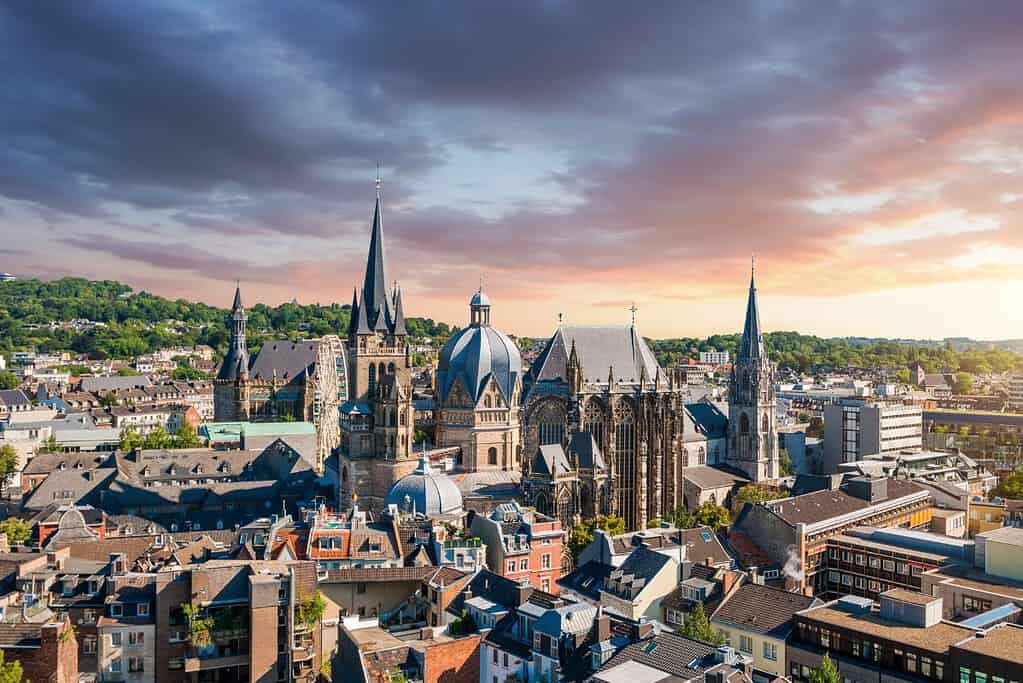
Aachen Cathedral, a UNESCO World Heritage Site, is a magnificent architectural masterpiece in Aachen, Germany. This historic cathedral holds immense cultural and religious significance as it was the coronation site of German kings for centuries. Built-in the 8th century, it showcases a harmonious blend of Romanesque and Gothic styles. The cathedral’s awe-inspiring features include its intricate mosaics, stunning stained glass windows, and the iconic Palatine Chapel, renowned for its exceptional Carolingian architecture. Aachen Cathedral stands as a testament to the region’s rich history and artistic excellence, attracting visitors from around the world.
Abbey and Altenmünster of Lorsch
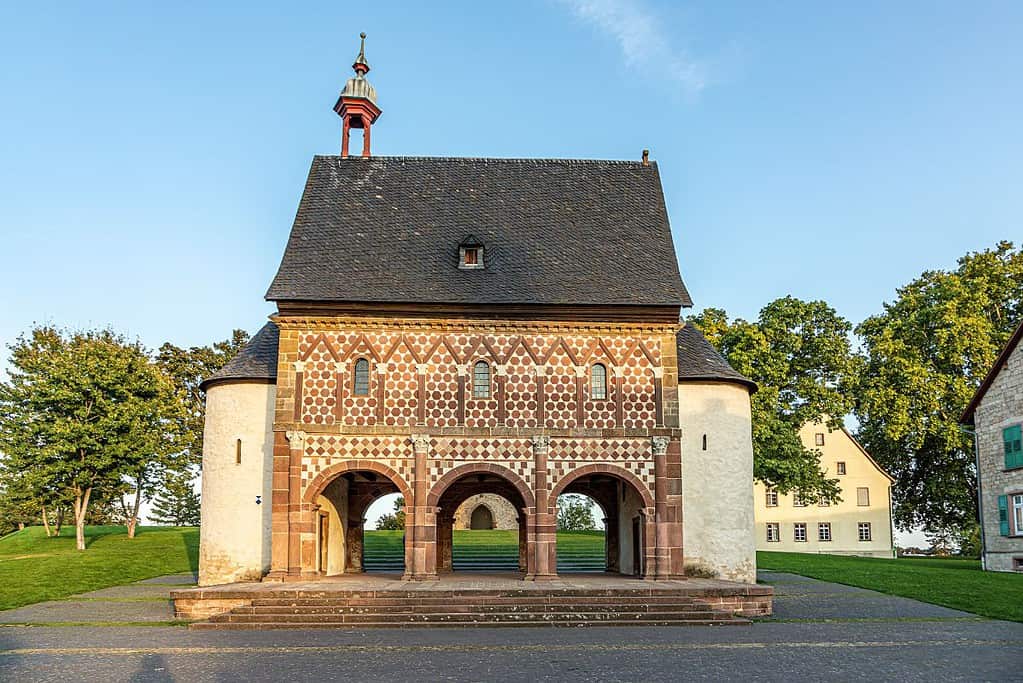
The Abbey and Altenmünster of Lorsch is a UNESCO World Heritage Site in Lorsch, Germany. This historic complex holds significant cultural and architectural value. The abbey, originally built in the 8th century, was a renowned center of learning and spirituality during the Carolingian period. It showcases exquisite Carolingian and Ottonian architecture examples, including the well-preserved King’s Hall and the Gatehouse. The Altenmünster, a former monastic church, features remarkable medieval frescoes that glimpse the region’s artistic heritage. The Abbey and Altenmünster of Lorsch stand as a testament to this site’s cultural richness and historical importance.
Archaeological Border complex of Hedeby and the Danevirke
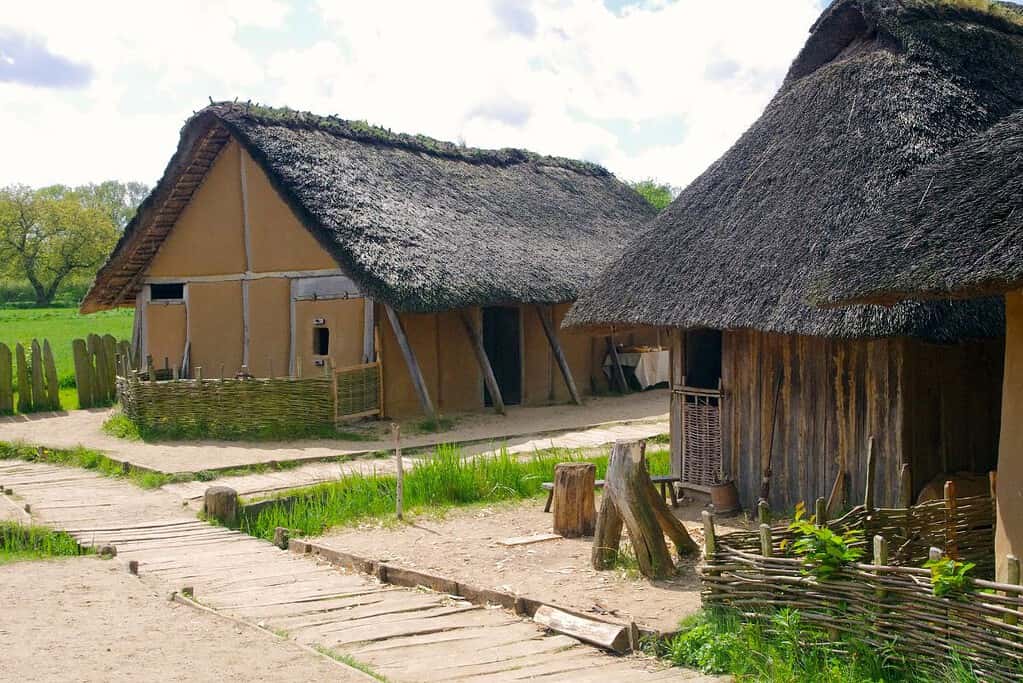
The Archaeological Border Complex of Hedeby and the Danevirke is a UNESCO World Heritage Site in Germany and Denmark. It consists of the ancient Viking trading town of Hedeby and the Danevirke, an impressive defensive earthwork system. Hedeby was a significant trade and cultural exchange hub during the Viking Age, serving as a vital link between the North and Baltic Seas. The Danevirke, a massive fortification, was crucial in protecting the region and controlling trade routes. These sites offer valuable insights into the history, architecture, and maritime activities of the Viking era, making them a fascinating destination for history enthusiasts and archaeology lovers alike.
Bauhaus and its Sites in Weimar, Dessau and Bernau

Bauhaus and its Sites in Weimar, Dessau, and Bernau are a UNESCO World Heritage Site in Germany. It represents the iconic Bauhaus design school, which revolutionized architecture, art, and craftsmanship in the 20th century. The site includes significant buildings and urban ensembles in the three cities where the school was situated. Weimar showcases the early phase of Bauhaus, while Dessau highlights its peak years with iconic structures like the Bauhaus Building and Masters’ Houses. In Bernau, the Bundesschule and the ADGB Trade Union School demonstrate the school’s later development. Together, these sites celebrate the innovative spirit and lasting influence of the Bauhaus movement on modern design and architecture.
Bergpark Wilhelmshöhe
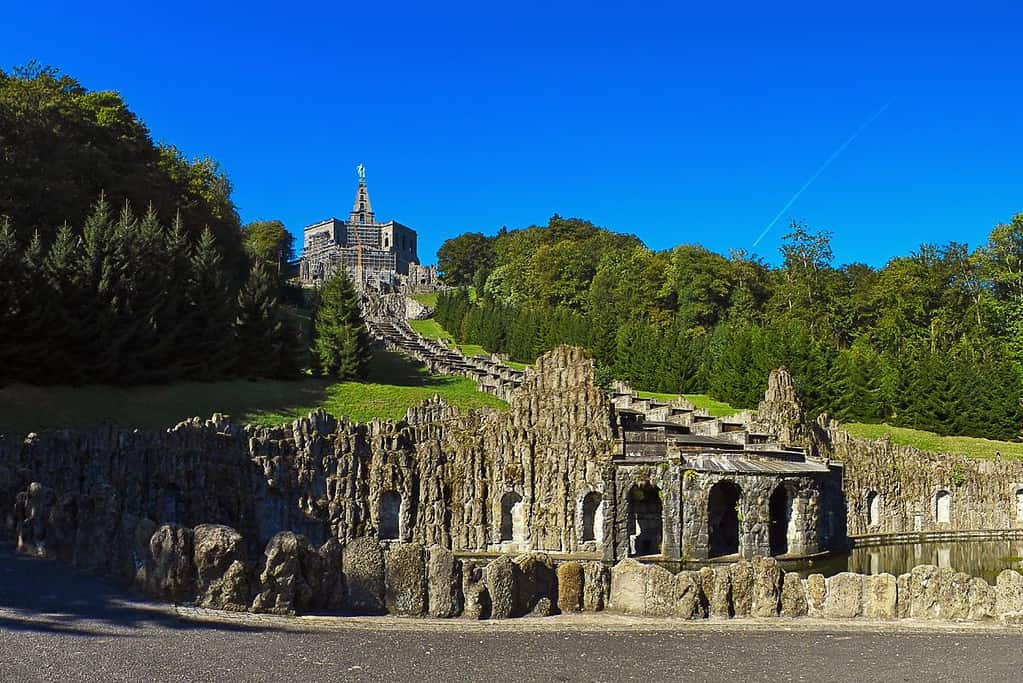
Bergpark Wilhelmshöhe is a UNESCO World Heritage Site located in Kassel, Germany. It is renowned for its stunning landscape design, combining natural beauty with architectural grandeur. The park features a magnificent baroque palace, Wilhelmshöhe Palace, which serves as a focal point of the area. One of its most impressive attractions is the Hercules Monument, a towering statue perched atop a cascading waterfall. The park’s terraced gardens, water features, and expansive vistas create a harmonious blend of nature and human creativity. Bergpark Wilhelmshöhe offers visitors a captivating experience where history, art, and nature converge in a breathtaking setting.
Berlin Modernism Housing Estates
Berlin Modernism Housing Estates is a UNESCO World Heritage Site in Berlin, Germany. These housing estates showcase the innovative architectural and urban planning principles of the early 20th century, particularly from the 1920s. Designed as social housing projects, they were built to provide affordable and high-quality living spaces for the working class. The estates, such as the Hufeisensiedlung, the Weiße Stadt, and the Großsiedlung Siemensstadt, feature distinctive modernist designs characterized by clean lines, functional layouts, and innovative materials. These estates are remarkable examples of architectural and urban design and represent a significant chapter in the history of social housing and the development of modern urban living.
Carolingian Westwork and Civitas Corvey
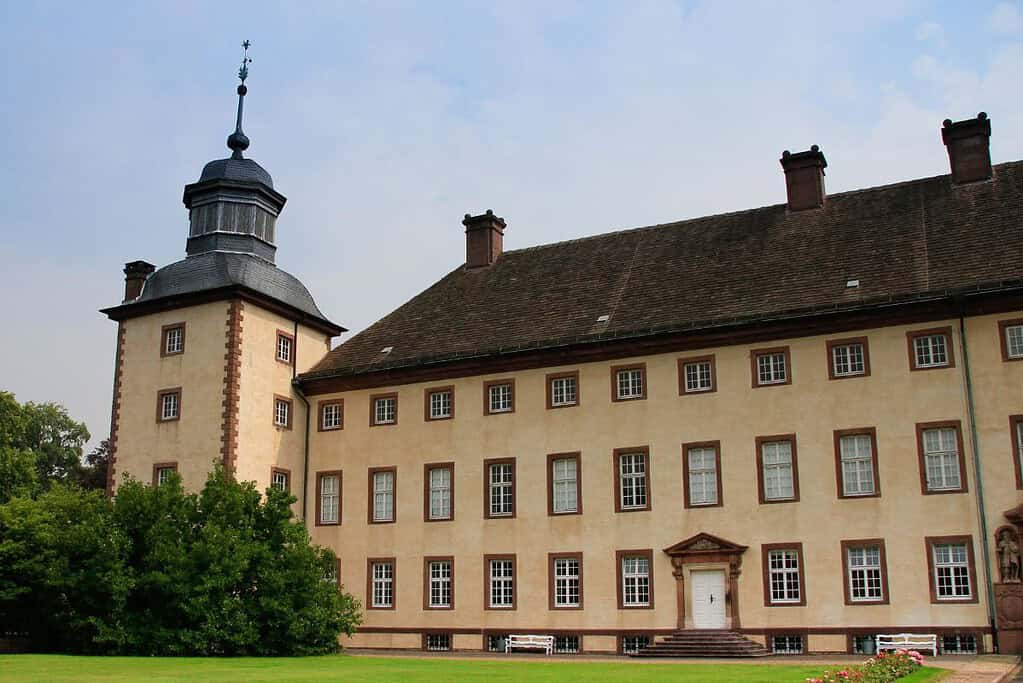
The Carolingian Westwork and Civitas Corvey are a UNESCO World Heritage Site in Germany. It consists of two significant architectural structures from the Carolingian period: the Westwork of Corvey Abbey and the adjacent Civitas Corvey. The Westwork is a distinctive western facade with towers and galleries showcasing the architectural achievements of the Carolingian dynasty. It served as a symbolic and functional entrance to the abbey and was crucial in spreading Carolingian architecture throughout Europe. The Civitas Corvey, the surrounding settlement, provides valuable insights into a Carolingian monastic community’s organization and daily life. Together, these structures offer a glimpse into the Carolingian era’s rich history and cultural heritage.
Castles of Augustusburg and Falkenlust at Brühl
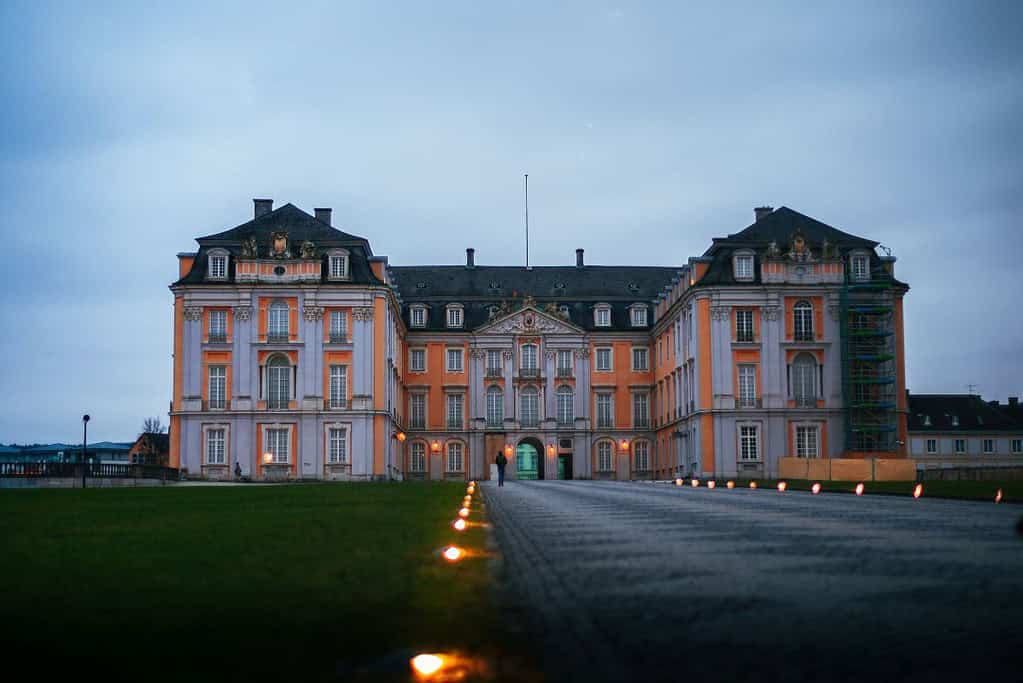
The Castles of Augustusburg and Falkenlust at Brühl are UNESCO World Heritage Sites in Brühl, Germany. These magnificent castles represent outstanding examples of Rococo architecture and are renowned for their exquisite beauty and historical significance. The Augustusburg Castle, constructed in the 18th century, served as a residence for the archbishops of Cologne and showcases opulent interiors adorned with intricate stuccowork and stunning frescoes. Falkenlust Castle, a hunting lodge built during the same period, features a more intimate and charming atmosphere. Both castles, surrounded by beautiful gardens and parkland, offer visitors a captivating glimpse into the grandeur and elegance of the Rococo era.
Caves and Ice Age Art in the Swabian Jura
Caves and Ice Age Art in the Swabian Jura is a UNESCO World Heritage Site in Germany. This site comprises several caves that have provided remarkable insights into human prehistory and early art development. The caves in the Swabian Jura region contain an extraordinary collection of Ice Age artifacts, including the oldest known figurative art in the world. The art found within these caves showcases early humans’ creativity and symbolic expression, depicting animals, humans, and abstract symbols. Exploring this site offers a unique opportunity to witness the rich cultural heritage of our ancient ancestors and gain a deeper understanding of human evolution.
Classical Weimar
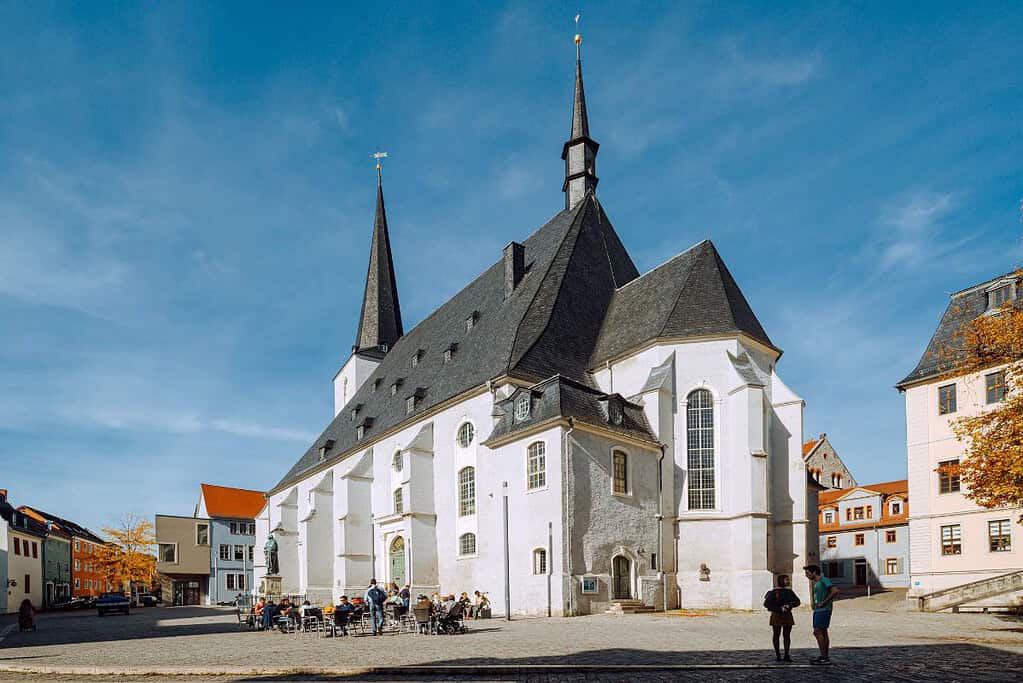
Classical Weimar is a UNESCO World Heritage Site located in Germany. It is a cultural ensemble that reflects the pinnacle of German Enlightenment during the late 18th and early 19th centuries. The site encompasses various landmarks and buildings associated with influential figures such as Johann Wolfgang von Goethe and Friedrich Schiller. These include Goethe’s Residence, Schiller’s Residence, the Duchess Anna Amalia Library, and the Weimar Court Theater. Classical Weimar is celebrated for its significant contributions to literature, philosophy, and the arts, making it a remarkable destination for those interested in exploring the intellectual and cultural heritage of the time.
Collegiate Church, Castle, and Old Town of Quedlinburg
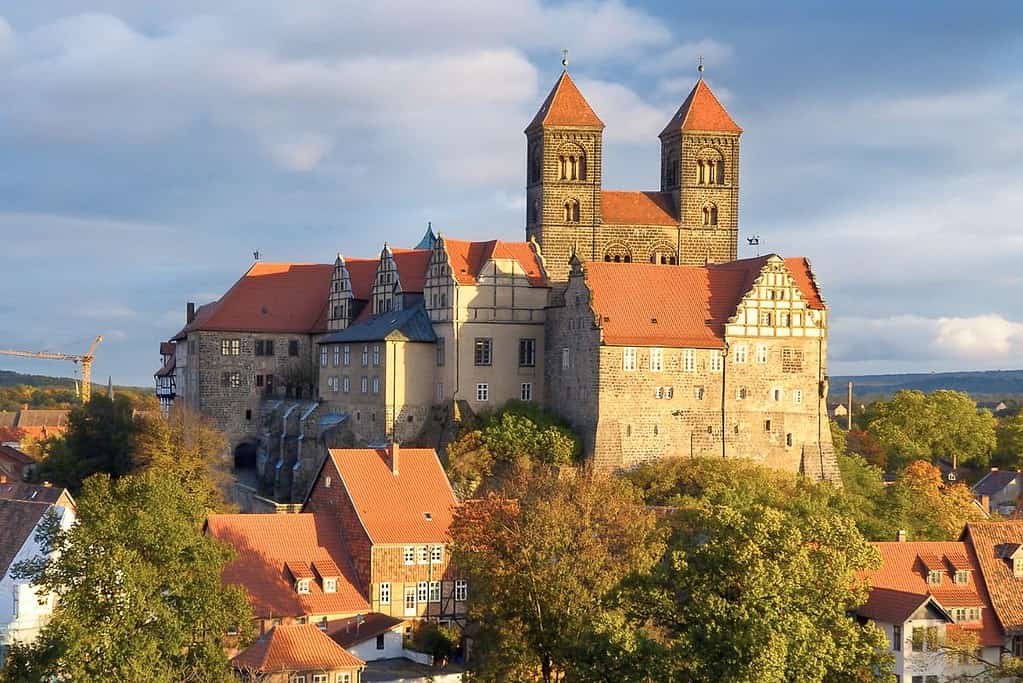
The Collegiate Church, Castle, and Old Town of Quedlinburg is a UNESCO World Heritage Site in Germany. This historic ensemble represents a remarkable example of medieval architecture and urban development. The Collegiate Church of St. Servatius, dating back to the 10th century, is a magnificent example of Romanesque architecture. The castle atop the hill offers panoramic views of the surrounding area and provides insights into the region’s feudal history. The Old Town of Quedlinburg, with its narrow streets, timber-framed houses, and charming squares, showcases its rich heritage and vibrant atmosphere. The site is a treasure trove of cultural and historical significance, offering visitors a glimpse into the past and a journey through time.
Cologne Cathedral
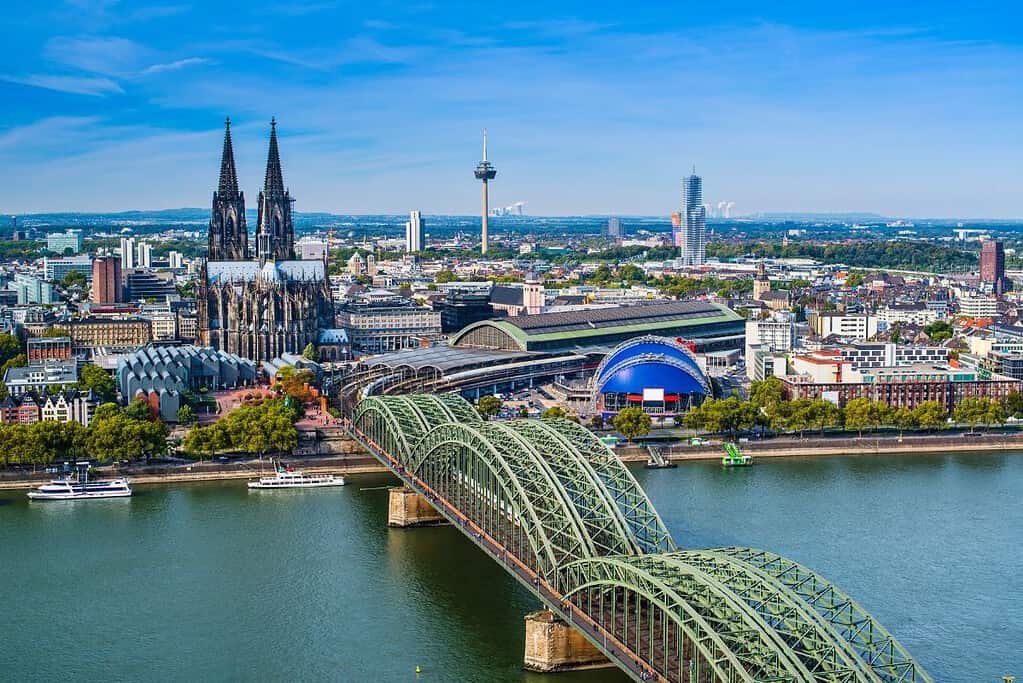
Cologne Cathedral, a UNESCO World Heritage Site located in Cologne, Germany, is a magnificent architectural masterpiece and a symbol of the city’s rich history. The cathedral’s awe-inspiring Gothic design and towering spires make it one of the most iconic landmarks in Europe. Built over several centuries, it showcases exquisite craftsmanship and intricate details inside and out. The interior houses stunning stained glass windows, intricate stone carvings, and a breathtaking shrine housing the relics of the Three Kings. As one of the largest cathedrals in the world, Cologne Cathedral stands as a testament to human ingenuity and spiritual devotion, attracting visitors from around the globe.
Erzgebirge/Krušnohoří Mining Region
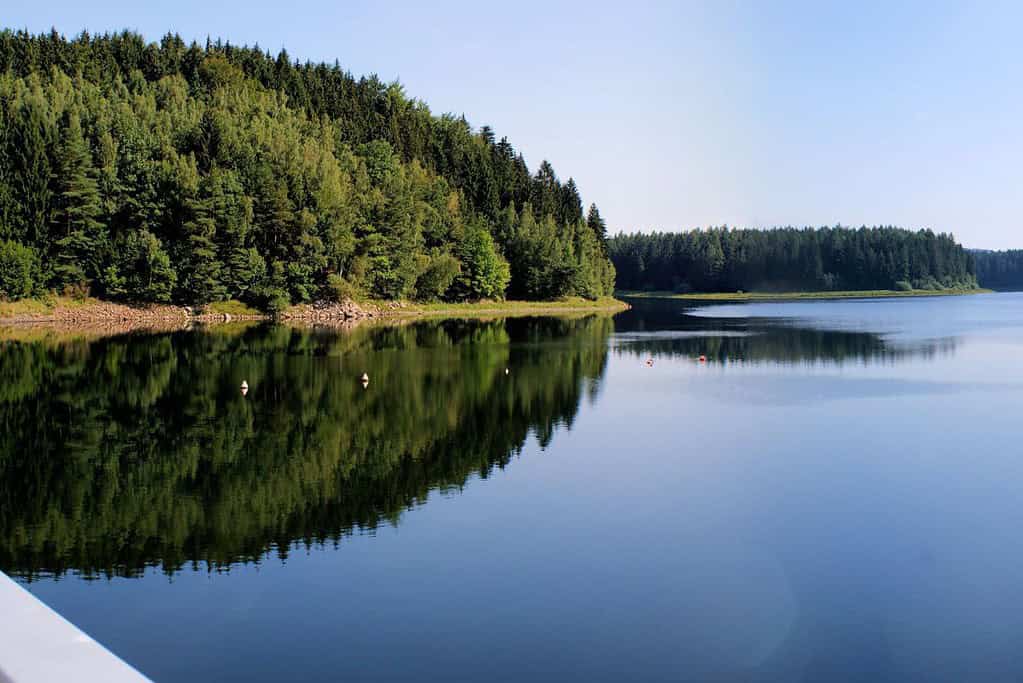
The Erzgebirge/Krušnohoří Mining Region is a UNESCO World Heritage Site located in the border region between Germany and the Czech Republic. This mining region has a rich history of mining activities that date back over 800 years. It played a significant role in developing mining technology and extracting various minerals, including silver, tin, and uranium. The site showcases a remarkable collection of mining landscapes, underground mines, towns, and historic mining infrastructure. It is a testament to the region’s cultural and technological contributions to mining. It is a fascinating destination for visitors interested in the history of mining and its impact on the local communities.
Fagus Factory in Alfeld
The Fagus Factory in Alfeld, Germany, is a UNESCO World Heritage Site renowned for its architectural significance. Designed by renowned modernist architects Walter Gropius and Adolf Meyer, the factory showcases pioneering construction techniques and innovative use of materials. Constructed between 1911 and 1913, the Fagus Factory is a prime example of early 20th-century industrial architecture and an important precursor to the Bauhaus movement. Its iconic glass curtain walls and functional design principles inspire architects and designers worldwide. The Fagus Factory is a testament to the harmonious integration of aesthetics and functionality, making it a must-visit destination for architecture enthusiasts and history lovers.
Frontiers of the Roman Empire
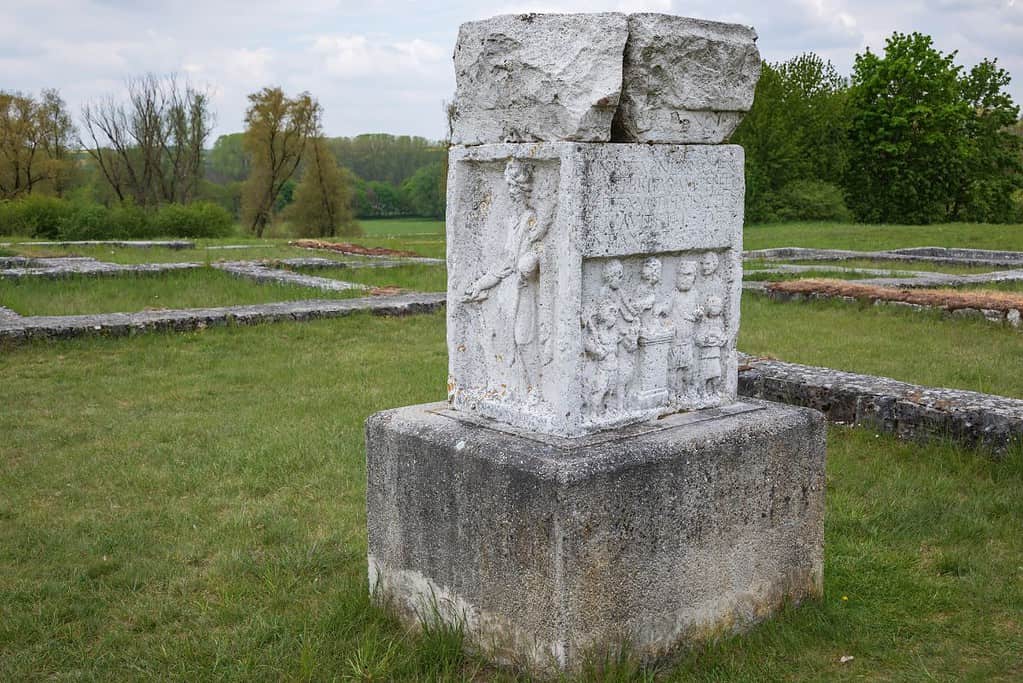
Frontiers of the Roman Empire is a UNESCO World Heritage Site that spans multiple countries and showcases the remains of the ancient Roman frontier. This site includes various fortifications, watchtowers, and other structures that once served as the borders of the Roman Empire. It offers a fascinating glimpse into Roman civilization’s military, cultural, and architectural legacy. The Frontiers of the Roman Empire site provides a unique opportunity to explore and appreciate these ancient frontiers’ strategic significance and historical importance.
Frontiers of the Roman Empire – The Danube Limes (Western Segment)
The Frontiers of the Roman Empire – The Danube Limes (Western Segment) is a UNESCO World Heritage Site in Europe. This site showcases the remarkable remains of the Roman Empire’s frontier along the Danube River, specifically the western segment. The Danube Limes played a crucial role in defending and controlling the empire’s northern boundaries. Visitors to this site can explore various well-preserved fortifications, watchtowers, and archaeological sites that offer insights into the Roman military strategy and daily life at the time. The Danube Limes are a testament to the ancient Roman civilization’s remarkable engineering and military prowess.
Frontiers of the Roman Empire – The Lower German Limes
The Lower German Limes is a UNESCO World Heritage Site showcasing the Roman Empire Frontiers in Germany. This remarkable site consists of well-preserved remains of the ancient Roman fortifications and boundary systems known as the Limes. These fortifications served as the northern frontier of the Roman Empire, protecting it from external threats during the 1st and 2nd centuries AD. The Lower German Limes offers a fascinating glimpse into the military, economic, and cultural aspects of the Roman presence in the region, featuring impressive watchtowers, forts, and sections of the fortified boundary. It stands as a testament to the engineering and strategic prowess of the ancient Romans.
Garden Kingdom of Dessau-Wörlitz
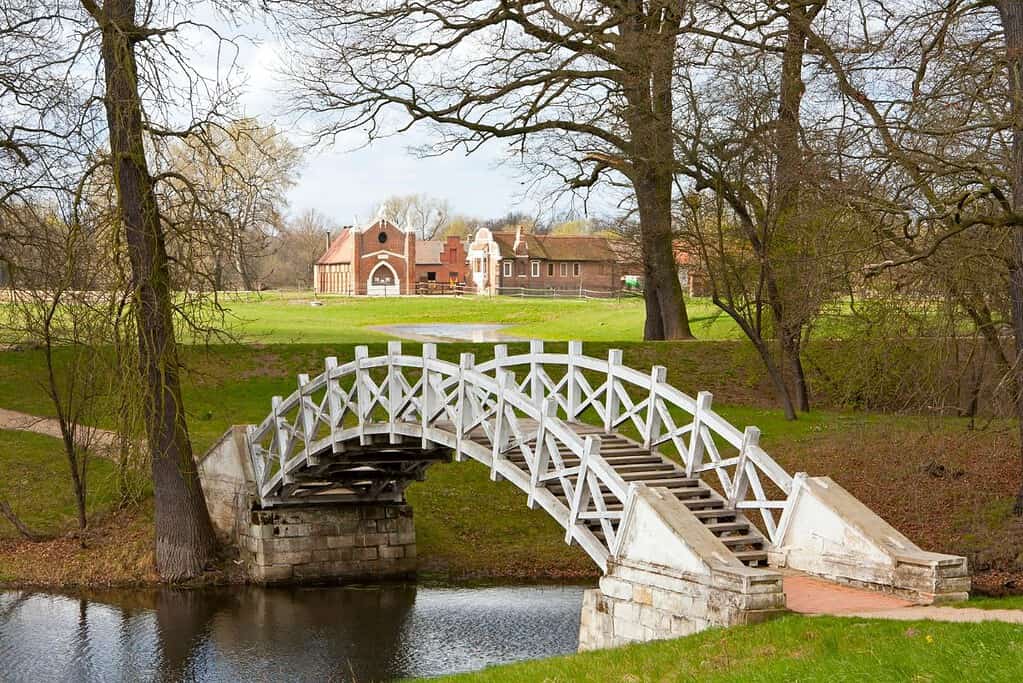
The Garden Kingdom of Dessau-Wörlitz is a UNESCO World Heritage Site in Germany. It is a remarkable landscape garden that combines natural beauty with innovative design. The garden is created in the late 18th century and showcases a harmonious blend of classical, English, and French styles. Visitors can explore a network of interconnected parks, lakes, and canals and impressive architectural structures such as the Gothic House, the Temple of Apollo, and the picturesque Wörlitz Castle. The Garden Kingdom of Dessau-Wörlitz is a testament to the Enlightenment ideals of its time and continues to captivate visitors with its enchanting scenery and cultural significance.
Hanseatic City of Lübeck
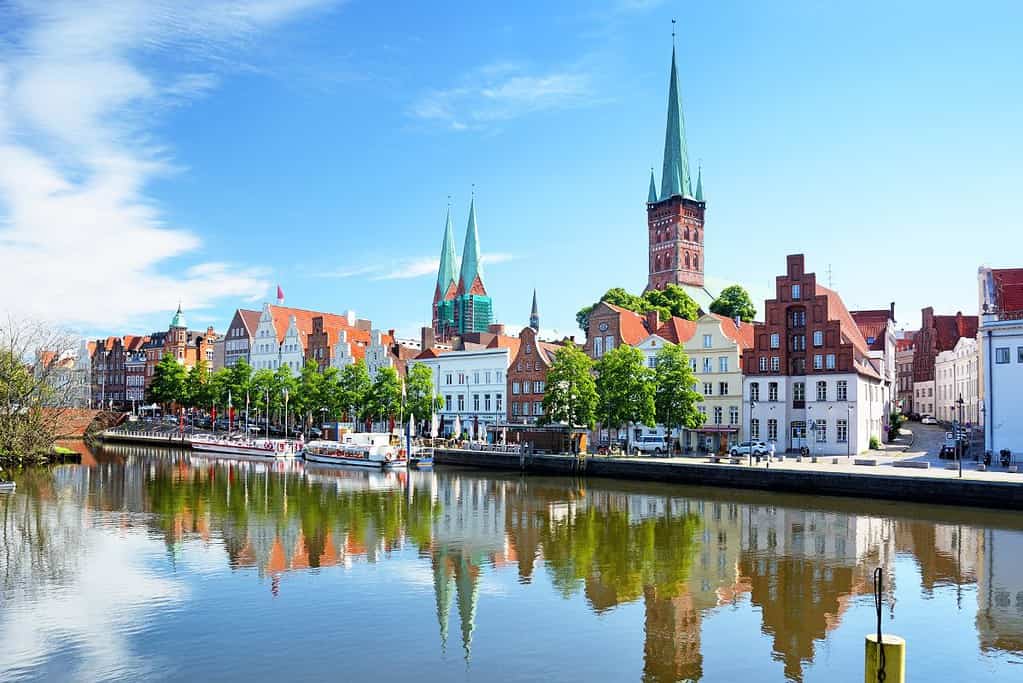
The Hanseatic City of Lübeck is a UNESCO World Heritage Site in northern Germany. It is renowned for its well-preserved medieval architecture and historical significance as a prominent member of the Hanseatic League. The stunning Holstentor, a grand gate that once symbolized Lübeck’s power and wealth, dominates the city’s iconic skyline. Strolling through the narrow, winding streets of the old town, visitors can admire charming gabled houses, picturesque courtyards, and impressive Gothic-style churches like the Marienkirche. Lübeck’s rich maritime history and vibrant cultural scene make it a captivating destination for those seeking a glimpse into the past and a taste of Hanseatic heritage.
Historic Centres of Stralsund and Wismar
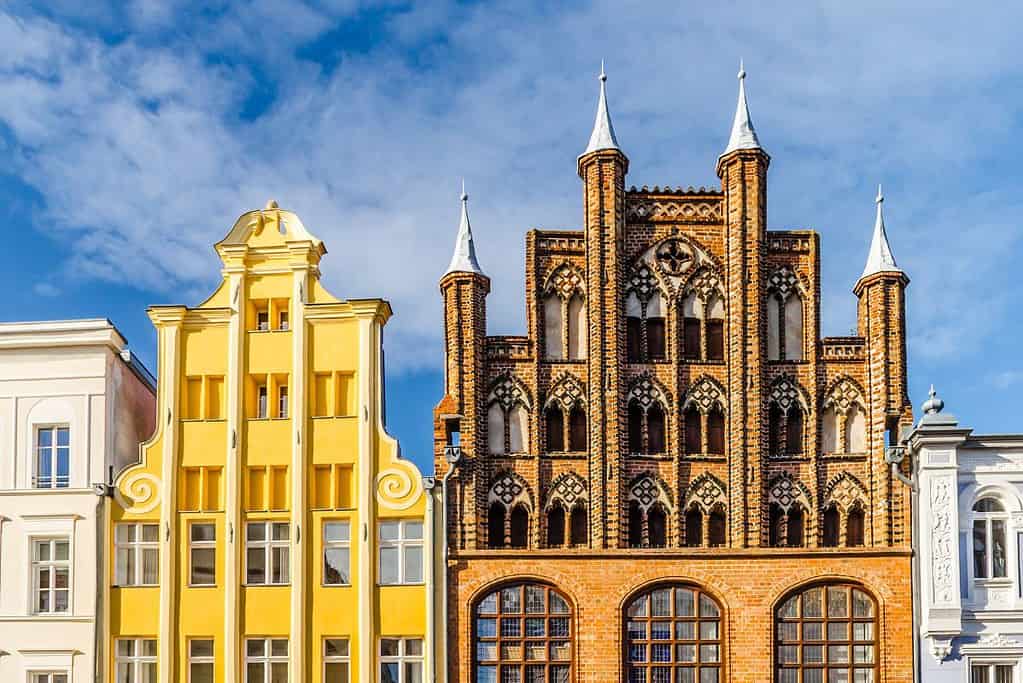
The Historic Centres of Stralsund and Wismar are UNESCO World Heritage Sites in northern Germany. These two charming cities were once major trading centers of the Hanseatic League, a powerful medieval trading alliance. The historic centers of Stralsund and Wismar are known for their well-preserved Gothic brick architecture, showcasing the region’s rich cultural and architectural heritage. Visitors can explore the winding streets, admire the impressive churches and town halls, and soak in the unique atmosphere of these picturesque Hanseatic cities. The combination of historical significance and architectural beauty makes the Historic Centres of Stralsund and Wismar a must-visit destination for history enthusiasts and lovers of medieval architecture.
Luther Memorials in Eisleben and Wittenberg
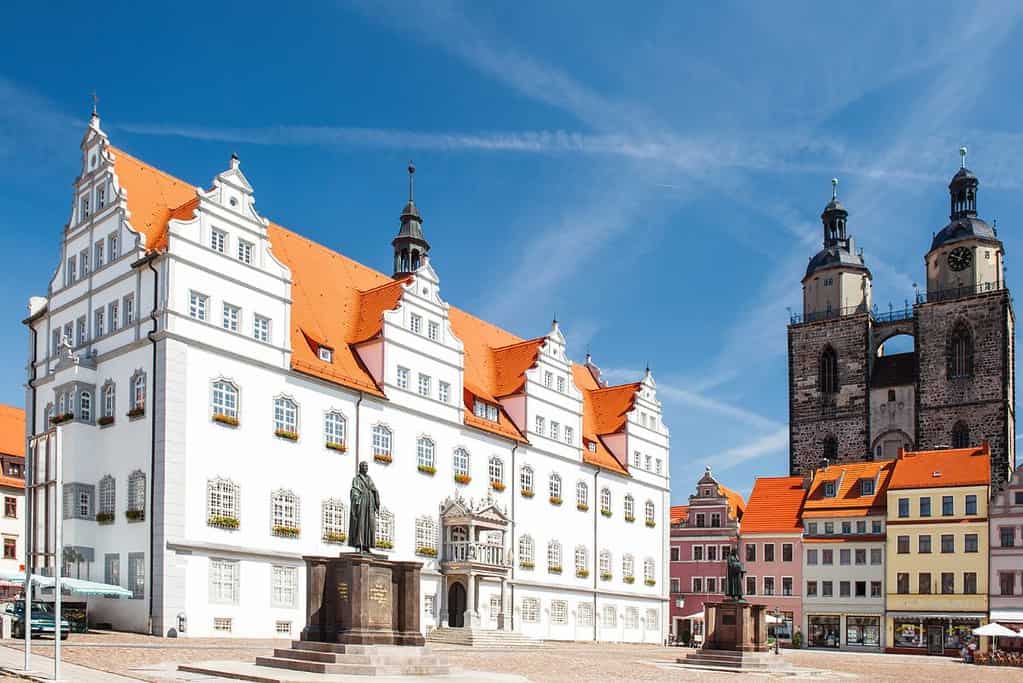
The Luther Memorials in Eisleben and Wittenberg are UNESCO World Heritage Sites in Germany. These sites hold great historical significance as they commemorate the life and legacy of Martin Luther, a key figure in the Protestant Reformation. Eisleben is Luther’s birthplace and where he passed away, while Wittenberg is where he lived and taught. The Luther Memorials consist of various buildings and landmarks associated with Luther, including his childhood home, the St. Andrew’s Church where he was baptized, and the Castle Church where he famously posted his Ninety-Five Theses. These memorials provide valuable insights into Luther’s teachings and profound impact on religious and social history.
Margravial Opera House Bayreuth
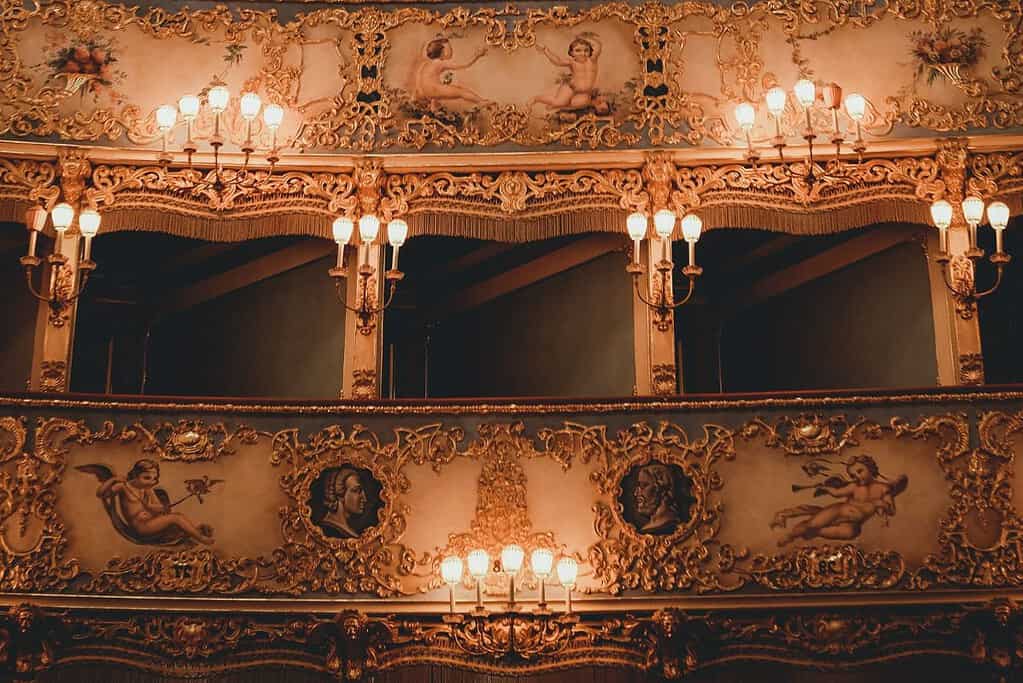
The Margravial Opera House in Bayreuth, Germany, is a UNESCO World Heritage Site. This stunning opera house, built in the 18th century, is an exceptional example of Baroque architecture and one of the most magnificent theaters in Europe. Its meticulously decorated interior, adorned with lavish frescoes and intricate woodwork, creates a grand and elegant atmosphere. The Margravial Opera House is a testament to Bayreuth’s cultural significance. It is a testament to the region’s rich opera and performing arts history.
Mathildenhöhe Darmstadt
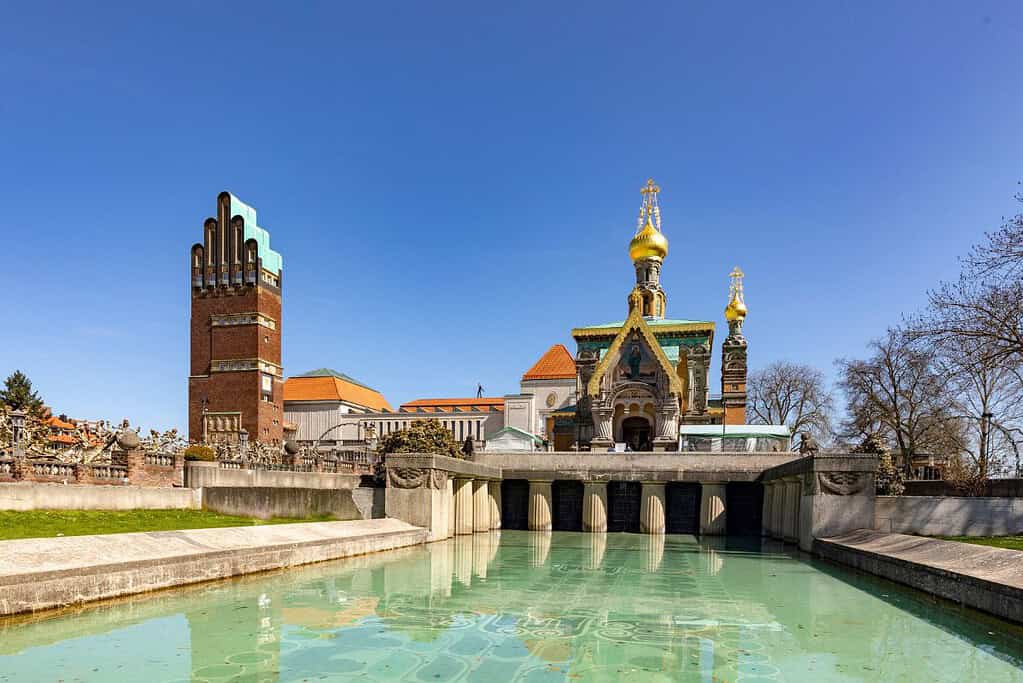
Mathildenhöhe Darmstadt is a UNESCO World Heritage Site located in Darmstadt, Germany. It is an exceptional example of an artist colony that flourished at the turn of the 20th century. The site showcases the innovative and avant-garde architecture, design, and art that emerged during the Jugendstil movement. Mathildenhöhe is home to numerous iconic buildings, including the Wedding Tower, an impressive structure that offers panoramic views of the surrounding area. The site also features beautifully landscaped gardens and sculptures, creating a harmonious blend of nature and art. Mathildenhöhe Darmstadt is a testament to the artistic achievements and cultural heritage of the early 20th century.
Maulbronn Monastery Complex
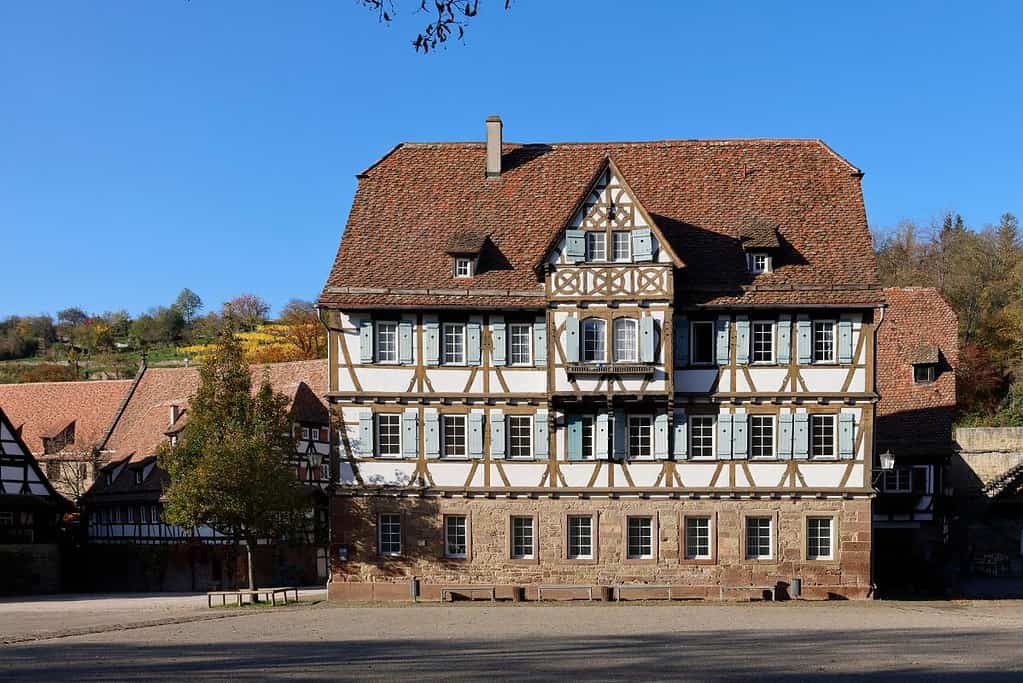
The Maulbronn Monastery Complex is a UNESCO World Heritage Site located in Germany. This complex, situated in the picturesque town of Maulbronn, showcases the Cistercian Order’s remarkable architectural and cultural heritage. Founded in the 12th century, the monastery complex features a harmonious blend of Romanesque, Gothic, and Renaissance styles. Its well-preserved structures include the majestic monastery church, the cloister, the chapter house, and other buildings. The Maulbronn Monastery Complex is a testament to the significance of Cistercian monasticism and continues to captivate visitors with its serene atmosphere and architectural splendor.
Mines of Rammelsberg, Historic Town of Goslar, and Upper Harz Water Management System
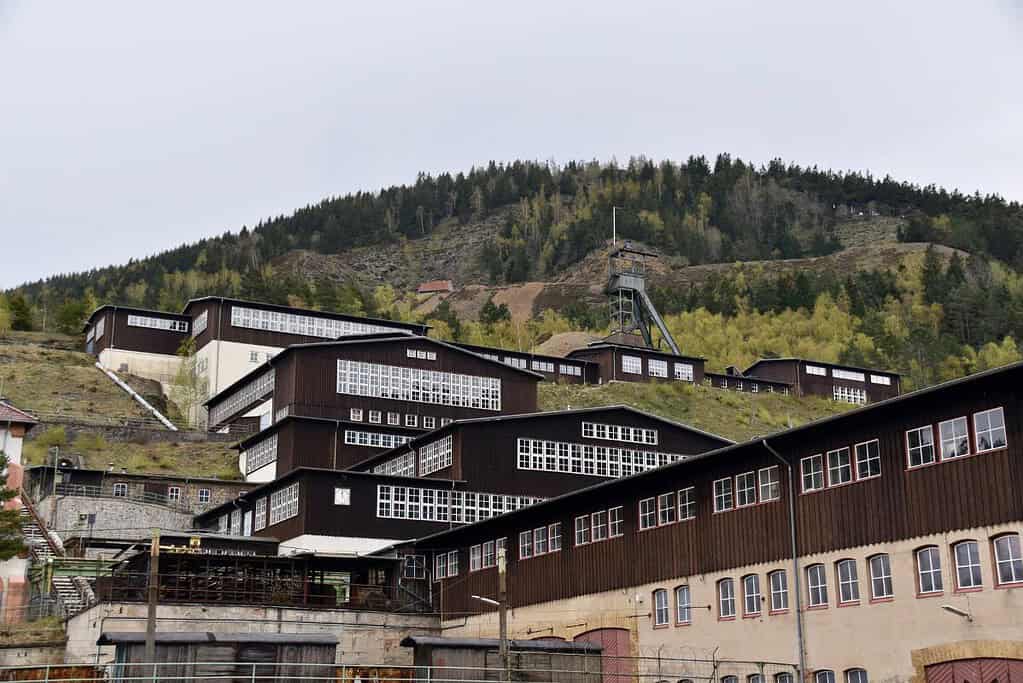
The Mines of Rammelsberg, the Historic Town of Goslar, and the Upper Harz Water Management System form a remarkable UNESCO World Heritage Site in Germany. This site represents an exceptional example of the mining and water management systems instrumental in the region’s economic and cultural development for over a thousand years. The Mines of Rammelsberg are a testament to the extensive mining operations, showcasing well-preserved mining infrastructure and underground galleries. The Historic Town of Goslar features a charming medieval town center with beautifully preserved timber-framed houses and notable landmarks such as the Imperial Palace. The Upper Harz Water Management System impressively demonstrates the technological advancements in water management, with an intricate network of dams, channels, and ponds facilitating mining operations. This UNESCO site offers a fascinating glimpse into the region’s rich history and the ingenuity of its inhabitants.
Monastic Island of Reichenau
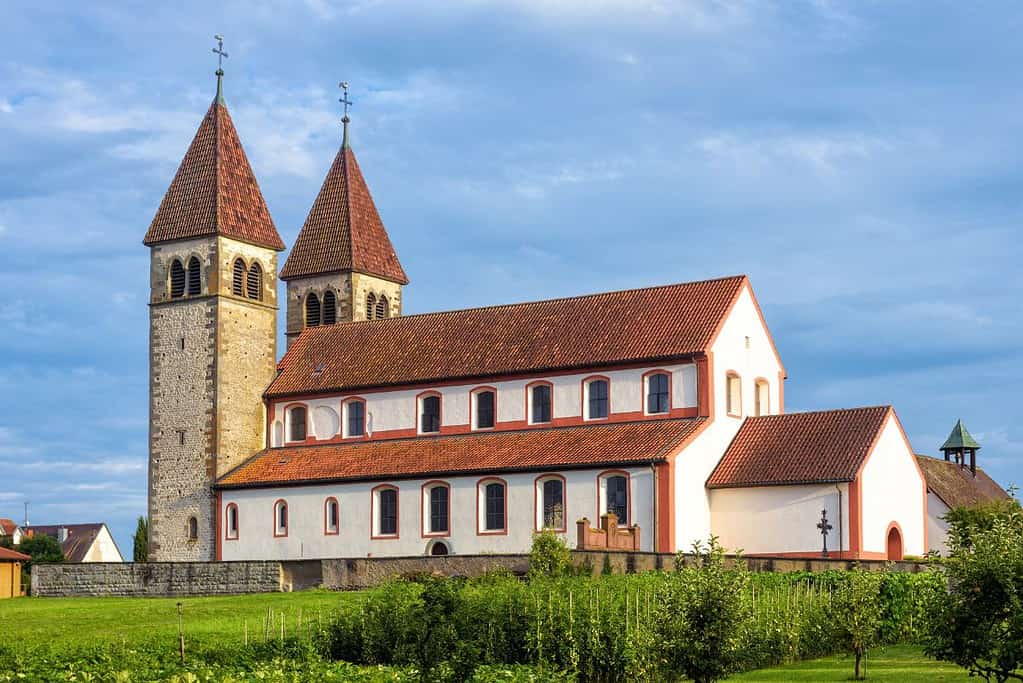
The Monastic Island of Reichenau is a UNESCO World Heritage Site in Germany. Situated on Lake Constance, this historic island is home to a remarkable ensemble of monastic buildings and churches dating back to the Middle Ages. The island was a prominent center for religious and intellectual pursuits during its heyday. Its picturesque landscape and well-preserved architecture, such as the famous Abbey of Reichenau and its iconic towers, showcase the artistic and cultural achievements of the Carolingian period. Visitors can explore the tranquil surroundings, admire the intricate frescoes, and immerse themselves in the rich history and spirituality that permeates this unique site.
Museumsinsel (Museum Island), Berlin
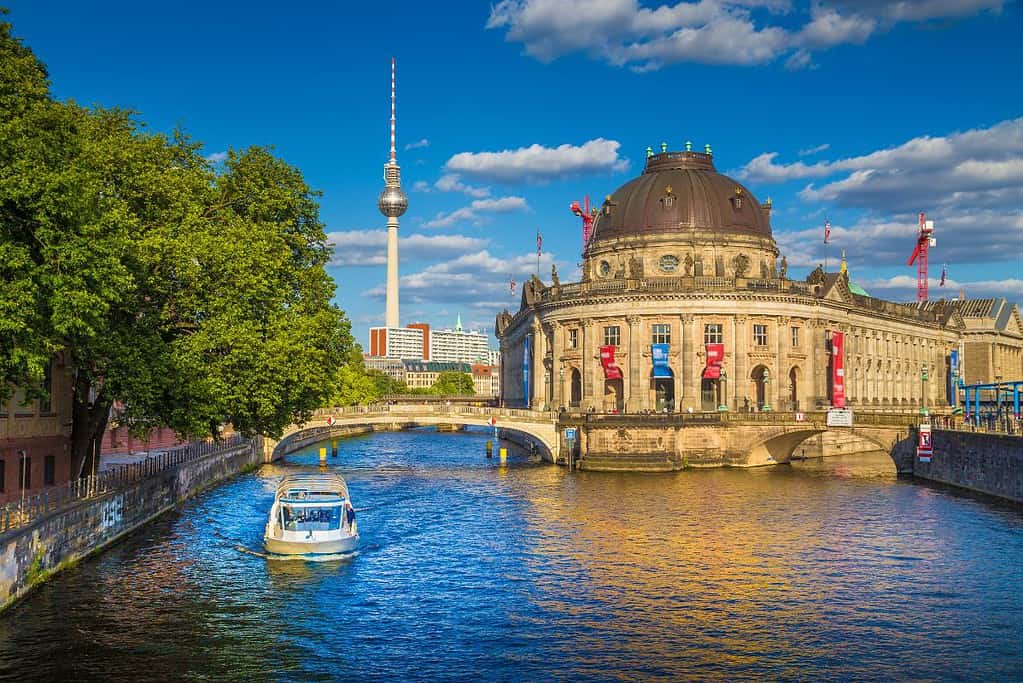
Museumsinsel (Museum Island) is a UNESCO World Heritage Site in Berlin, Germany. It is an exceptional cultural and historical ensemble on a small Spree River island. The island is home to five world-renowned museums: the Pergamon Museum, the Bode Museum, the Neues Museum, the Alte Nationalgalerie, and the Altes Museum. These museums house an extensive collection of art and artifacts, ranging from ancient Egyptian treasures to classical sculptures and paintings from various periods. The buildings’ architecture is impressive, showcasing a blend of neoclassical, Renaissance, and Baroque styles. Museumsinsel is a must-visit destination for art and history enthusiasts, offering a captivating journey through time and culture.
Muskauer Park / Park Mużakowski
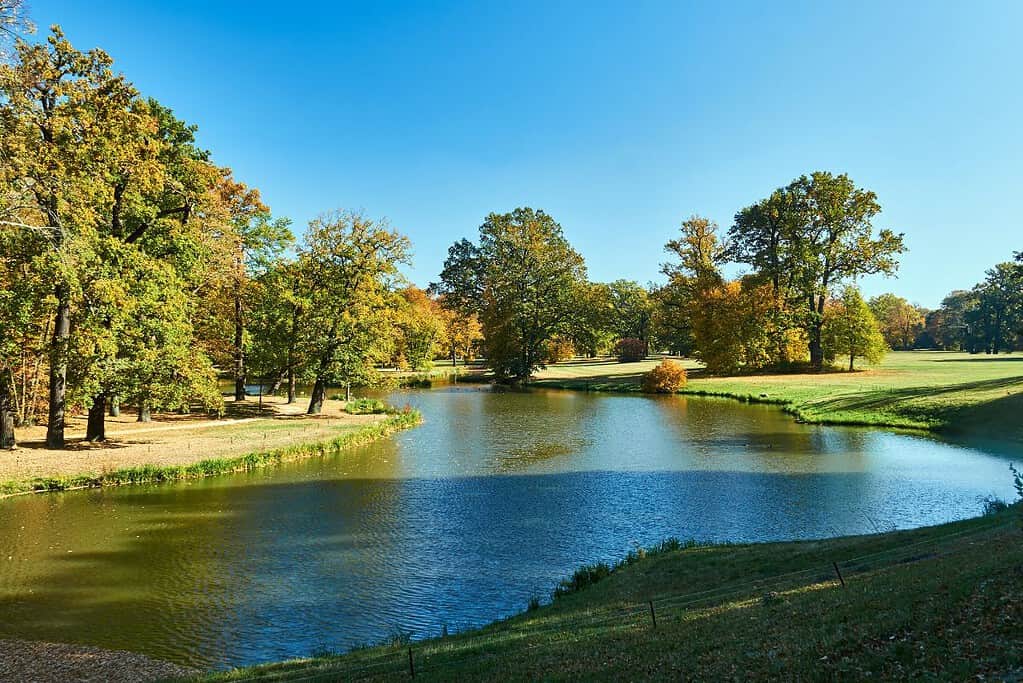
Muskauer Park, also known as Park Mużakowski, is a UNESCO World Heritage Site located on the border of Poland and Germany. This unique park is a stunning landscape design, combining elements of English and French styles. Designed by Prince Hermann von Pückler-Muskau in the 19th century, the park seamlessly blends natural beauty with architectural elements, including picturesque gardens, scenic pathways, and charming bridges. The park’s centerpiece is the Neisse River, which gracefully meanders through the landscape, adding to the park’s serene atmosphere. Muskauer Park is a true testament to the harmonious integration of man-made and natural elements, making it a must-visit destination for nature lovers and garden enthusiasts.
Naumburg Cathedral
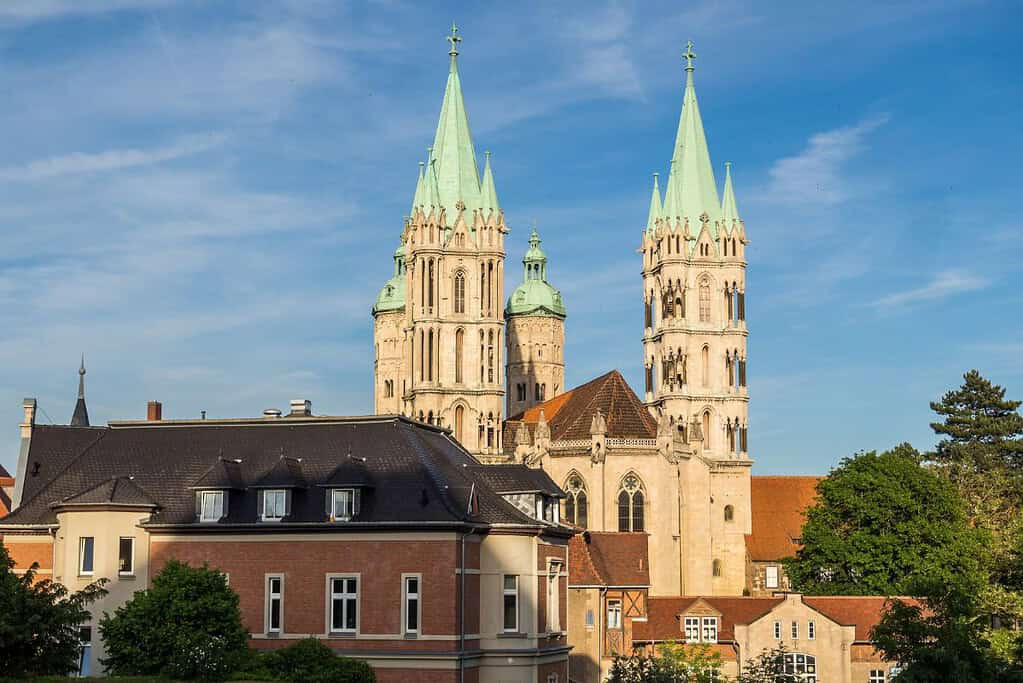
Naumburg Cathedral, located in Naumburg, Germany, is a UNESCO World Heritage Site of great historical and cultural significance. This magnificent Gothic cathedral dates back to the 13th century and is renowned for its exquisite medieval art and architecture. The cathedral’s interior boasts stunning stained glass windows, intricate stone carvings, and a remarkable collection of medieval sculptures, including the famous Naumburg Masterpieces. These masterpieces are a set of 13th-century sculptures representing the cathedral’s founders, considered one of Europe’s most exceptional examples of medieval sculpture. Naumburg Cathedral is a testament to the skill and creativity of its medieval craftsmen, making it a must-visit destination for art and history enthusiasts alike.
Old town of Regensburg with Stadtamhof
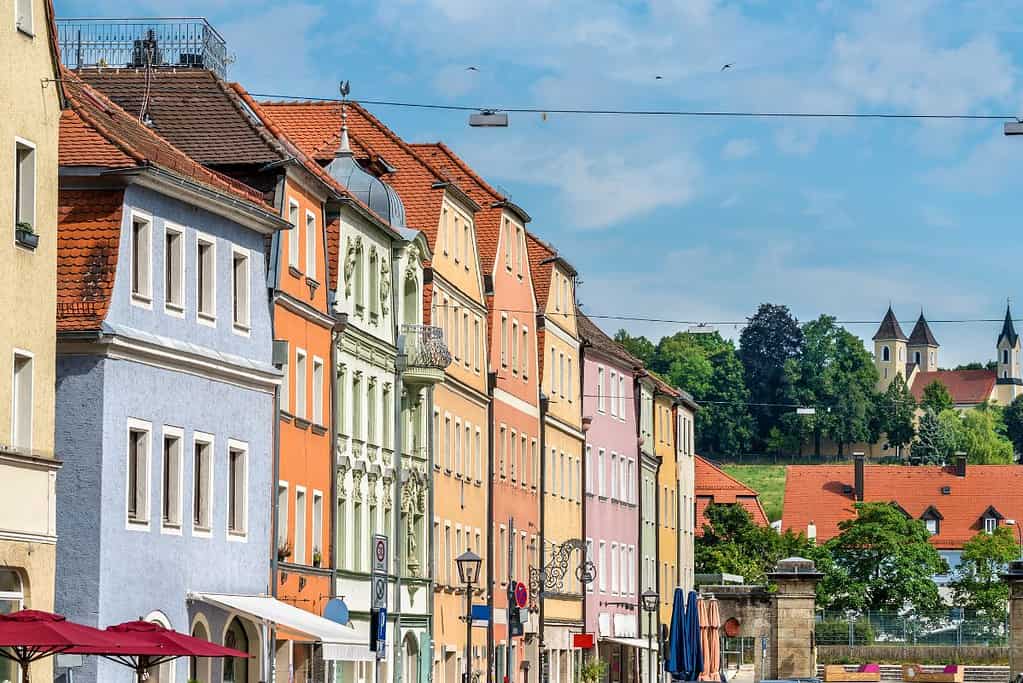
The Old Town of Regensburg with Stadtamhof is a UNESCO World Heritage Site in Germany. This historic area is renowned for its well-preserved medieval architecture and cultural significance. The Old Town of Regensburg showcases an impressive ensemble of buildings, including the famous Regensburg Cathedral, a prime example of Gothic architecture. The Stone Bridge, spanning the Danube River, adds to the charm of this picturesque town. Stadtamhof, situated on an island, offers a unique atmosphere with its narrow streets and colorful houses. Together, these two areas glimpse Regensburg’s rich history and cultural heritage.
Palaces and Parks of Potsdam and Berlin

The Palaces and Parks of Potsdam and Berlin is a UNESCO World Heritage Site in Germany. This exceptional ensemble encompasses numerous palaces, parks, and gardens that showcase the region’s rich history and cultural heritage. The site includes iconic landmarks such as Sanssouci Palace, New Palace, Charlottenhof Palace, and the magnificent gardens of Sanssouci Park. These architectural marvels, designed by renowned architects and landscape artists, blend Baroque, Rococo, and Neoclassical styles beautifully. The Palaces and Parks of Potsdam and Berlin offer visitors a glimpse into the grandeur and opulence of Prussian royalty while providing a tranquil oasis of natural beauty amidst bustling urban surroundings.
Pilgrimage Church of Wies
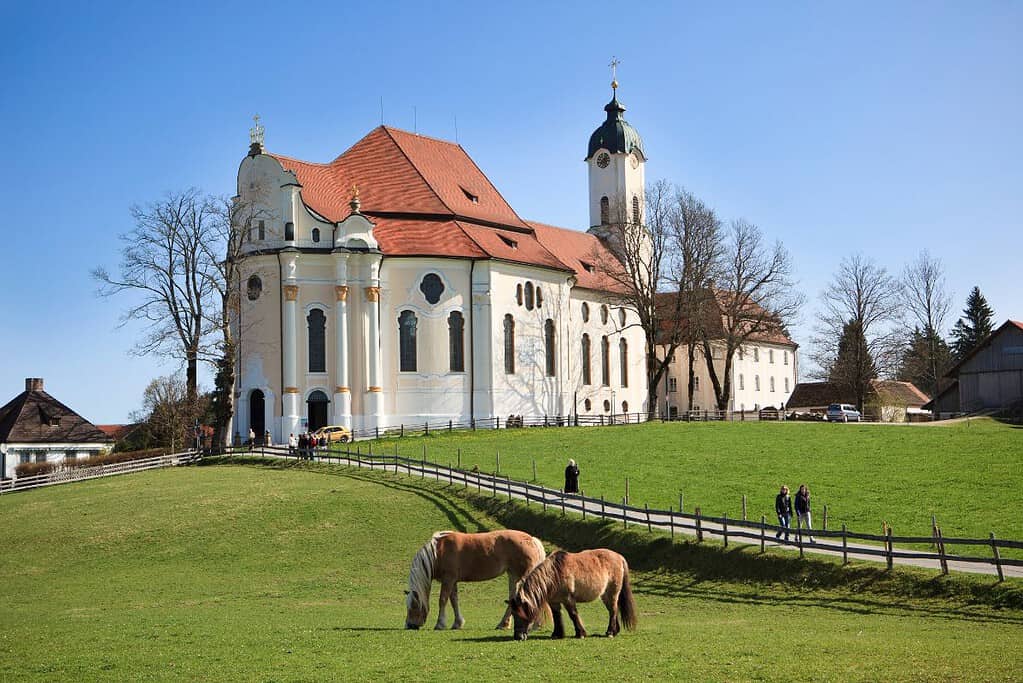
The Pilgrimage Church of Wies is a UNESCO World Heritage Site in Bavaria, Germany. This magnificent church is renowned for its exceptional Rococo architecture and stunning interior. Constructed in the 18th century, it was designed as a place of pilgrimage and devotion. The church is particularly famous for its miraculous wooden statue of the Scourged Savior, which attracts visitors worldwide. The beautifully ornate interior, adorned with frescoes and stuccowork, creates an awe-inspiring atmosphere for worshipers and art enthusiasts alike. The Pilgrimage Church of Wies stands as a remarkable testament to the skill and craftsmanship of its time, and it continues to inspire awe and reverence in all who visit.
Prehistoric Pile Dwellings around the Alps
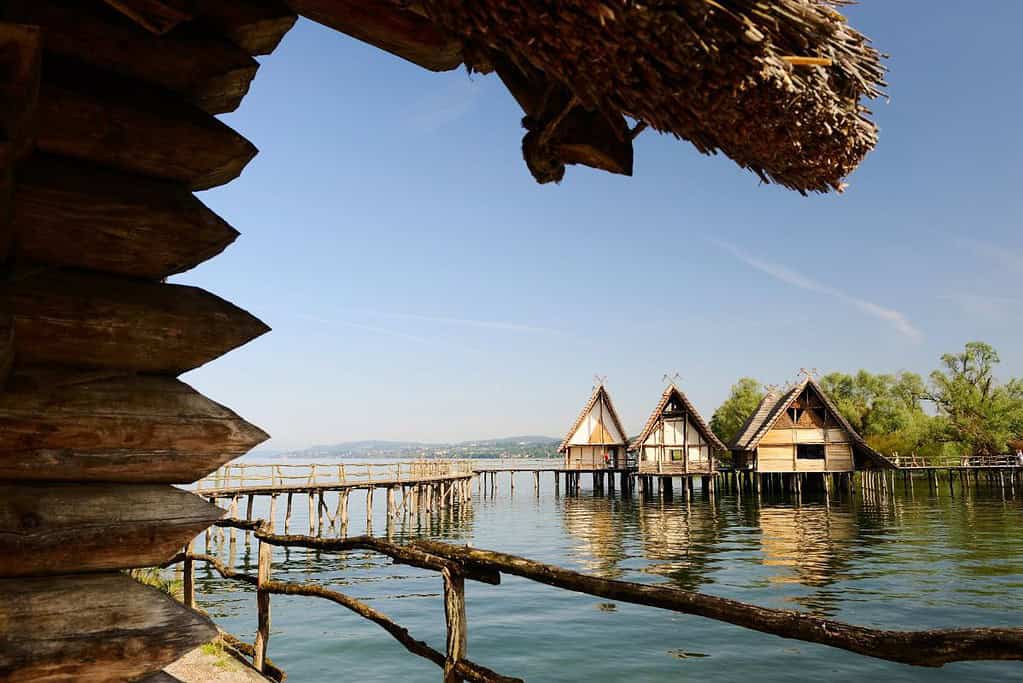
The Prehistoric Pile Dwellings around the Alps is a UNESCO World Heritage Site in the Alpine region. This site comprises a series of ancient settlements built on wooden stilts over lakes, rivers, and marshes during the Neolithic and Bronze Ages. These innovative pile dwellings provide valuable insights into prehistoric communities’ daily lives, technology, and social organization. The well-preserved remains include dwellings, platforms, walkways, and artifacts such as tools, pottery, and organic materials. The site is a remarkable testament to the early human adaptation to the natural environment and is a significant archaeological treasure of the Alpine region.
Roman Monuments, Cathedral of St Peter and Church of Our Lady in Trier
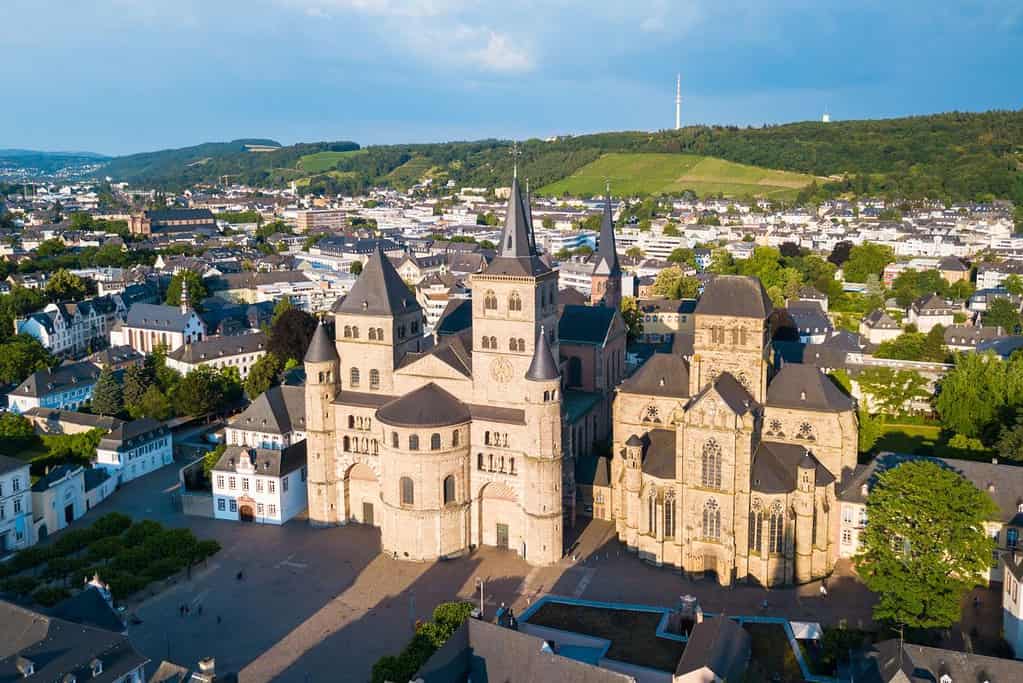
The Roman Monuments, Cathedral of St. Peter, and Church of Our Lady in Trier are a UNESCO World Heritage Site in Trier, Germany. This remarkable site showcases the rich history and architectural legacy of the ancient Roman Empire. Trier, once known as Augusta Treverorum, was an important Roman capital with an impressive collection of well-preserved monuments. The site’s highlight is the Cathedral of St. Peter, a magnificent structure combining Romanesque and Gothic styles. Adjacent to the cathedral is the Church of Our Lady, an exquisite example of early Gothic architecture. These monuments and the Roman ruins scattered throughout the city capture Trier’s illustrious past.
ShUM Sites of Speyer, Worms and Mainz
The ShUM Sites of Speyer, Worms, and Mainz are a UNESCO World Heritage Sites in Germany. These sites represent the medieval Jewish communities that thrived in these cities. ShUM is the first letter of the Hebrew names for Speyer, Worms, and Mainz. During the Middle Ages, the ShUM communities played a significant role in Jewish culture, scholarship, and religious practice. The sites include synagogues, ritual baths, cemeteries, and other structures that reflect the rich history and architectural heritage of the Jewish community in the region. The ShUM Sites are not only important for Jewish history but also offer valuable insights into the cultural diversity and interfaith relations of medieval Europe.
Speicherstadt and Kontorhaus District with Chilehaus
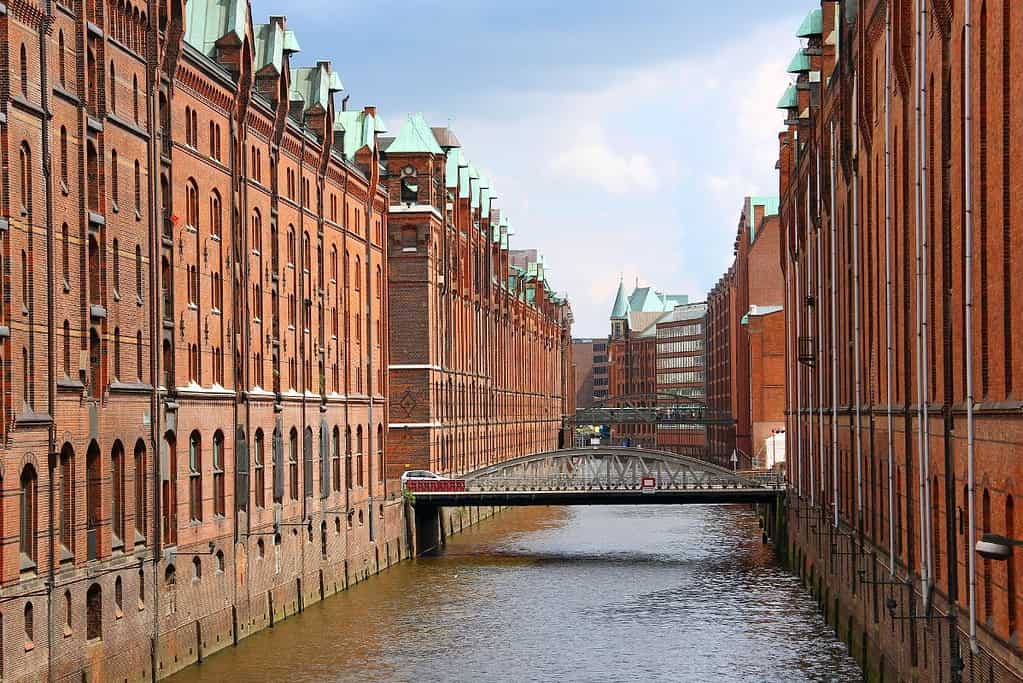
Speicherstadt and Kontorhaus District with Chilehaus is a UNESCO World Heritage Site in Hamburg, Germany. This unique site showcases the city’s historic warehouse district, known as Speicherstadt, and the neighboring Kontorhaus district, which includes the iconic Chilehaus. Speicherstadt is the largest warehouse district in the world and stands out for its red-brick buildings, intricate canal network, and impressive neo-Gothic architecture. The Kontorhaus district, on the other hand, represents early 20th-century urban planning and features striking office buildings, including the renowned Chilehaus, with its distinctive stepped gables and expressionist brick design. Together, these areas offer a captivating blend of historical significance, architectural excellence, and cultural heritage that attracts visitors from around the world.
Speyer Cathedral
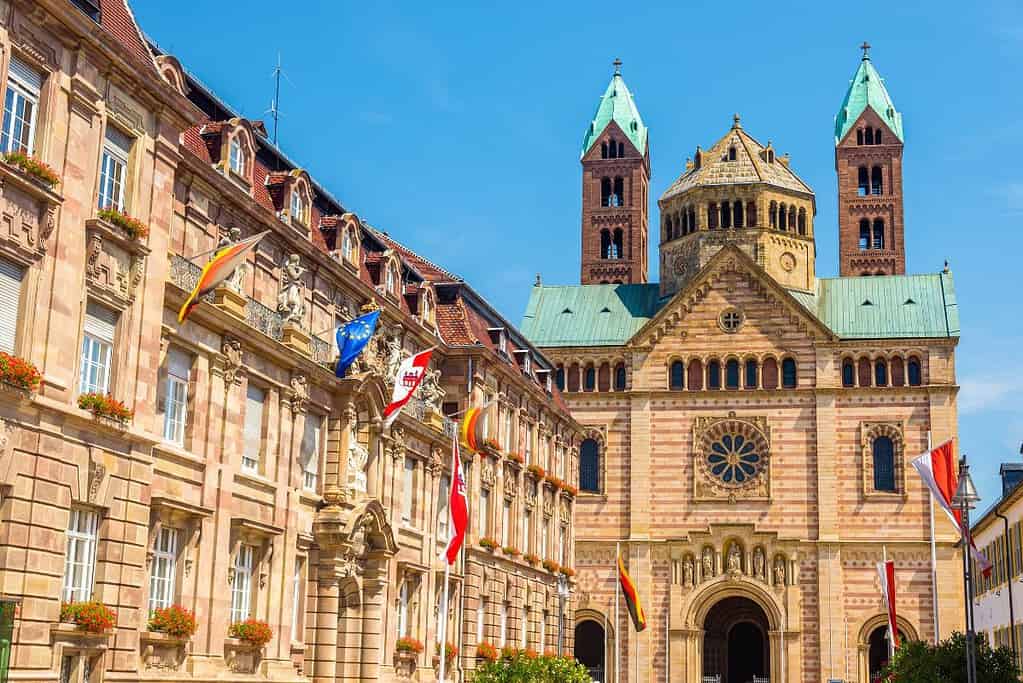
Speyer Cathedral, a UNESCO World Heritage Site located in Germany, is a magnificent example of medieval architecture and a symbol of religious and cultural significance. Constructed in the 11th century, this grand Romanesque cathedral boasts impressive size and intricate design, showcasing the mastery of the builders of that era. The cathedral’s imposing exterior, adorned with ornate details and towering spires, commands attention from afar. Visitors are greeted with awe-inspiring vaulted ceilings, beautiful stained glass windows, and a serene atmosphere inviting contemplation. As one of Germany’s most important Romanesque structures, Speyer Cathedral stands as a testament to its time’s rich history and architectural prowess.
St Mary’s Cathedral and St Michael’s Church at Hildesheim
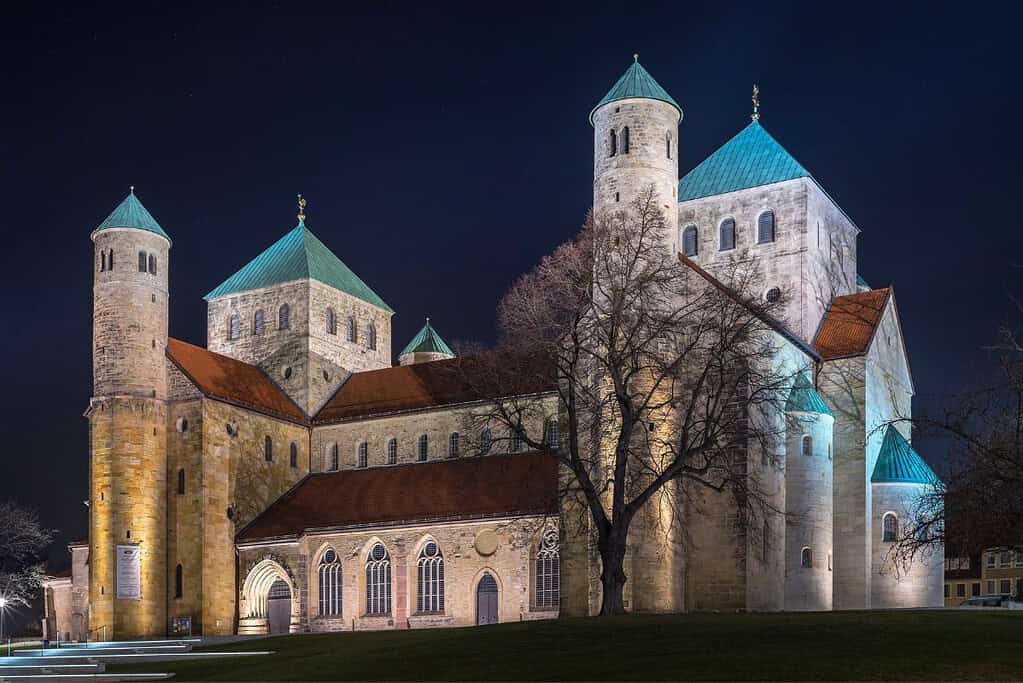
St. Mary’s Cathedral and St. Michael’s Church at Hildesheim are UNESCO World Heritage Sites in Hildesheim, Germany. St. Mary’s Cathedral, also known as Hildesheim Cathedral, is an architectural masterpiece from the 11th century. It showcases a blend of Romanesque and Gothic styles stunning bronze doors, intricate stone carvings, and beautifully preserved medieval art treasures. St. Michael’s Church, on the other hand, is a prime example of early Romanesque architecture. Its notable features include the famous Bernward Doors, adorned with biblical scenes, and the impressive painted wooden ceiling. Together, these sites represent significant cultural and historical importance, offering visitors a glimpse into the rich heritage of Hildesheim.
The Architectural Work of Le Corbusier, an Outstanding Contribution to the Modern Movement
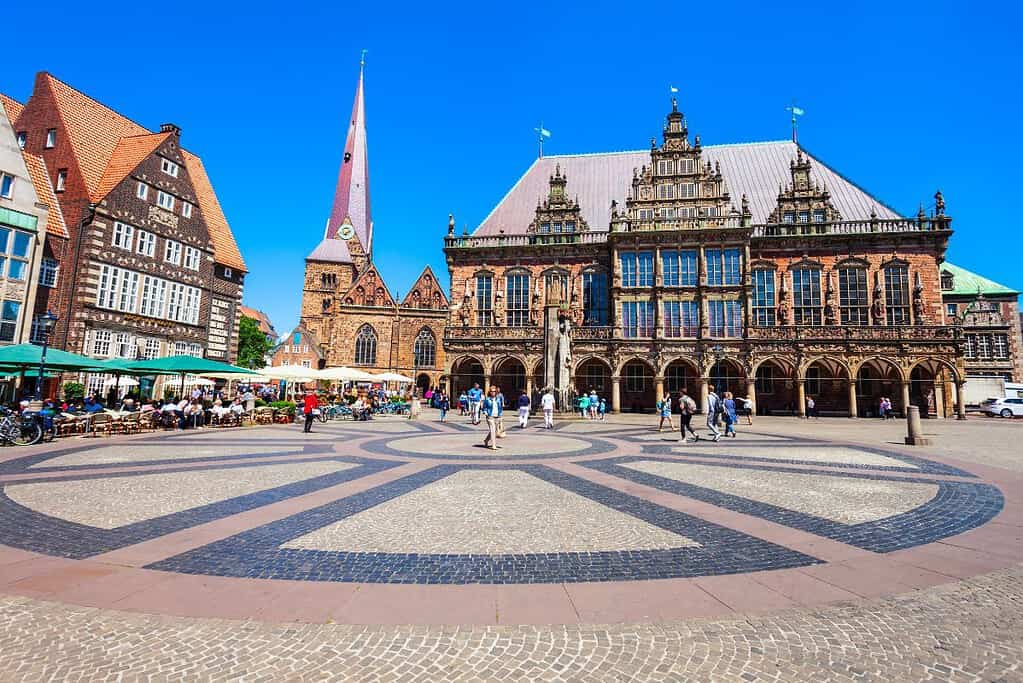
The Architectural Work of Le Corbusier, an Outstanding Contribution to the Modern Movement, is a UNESCO World Heritage Site in Germany. This exceptional collection of buildings represents the pioneering work of renowned architect Le Corbusier. The site includes a range of iconic structures, such as the Villa Savoye, the Unité d’Habitation in Marseille, and the Notre-Dame du Haut chapel in Ronchamp. Le Corbusier’s innovative designs, characterized by open floor plans, functionalism, and the use of concrete, had a profound impact on modern architecture. The inclusion of this site on the UNESCO list acknowledges its significance and influence on the development of 20th-century architecture.
The Great Spa Towns of Europe
The Great Spa Towns of Europe is a UNESCO World Heritage Site that showcases the historical significance and architectural beauty of various spa towns across the continent. This collection of renowned European destinations includes iconic locations such as Karlovy Vary in the Czech Republic, Bath in the United Kingdom, and Baden-Baden in Germany. These towns have a rich history dating back centuries and are known for their thermal springs, elegant architecture, and cultural heritage. Visitors can immerse themselves in the healing waters, explore stunning spa buildings, and experience these remarkable spa towns’ unique charm and relaxation.
Town Hall and Roland on the Marketplace of Bremen
The Town Hall and Roland on the Marketplace of Bremen is a UNESCO World Heritage Site in Bremen, Germany. The site consists of the stunning Town Hall, a magnificent example of Gothic and Renaissance architecture, and the iconic Roland statue, a symbol of civic freedom and independence. The Town Hall, dating back to the 15th century, showcases intricate details and decorative elements, while the Roland statue represents the city’s historical significance as a center of trade and commerce. Together, these landmarks form a captivating ensemble that reflects the rich cultural heritage and historical importance of Bremen.
Town of Bamberg
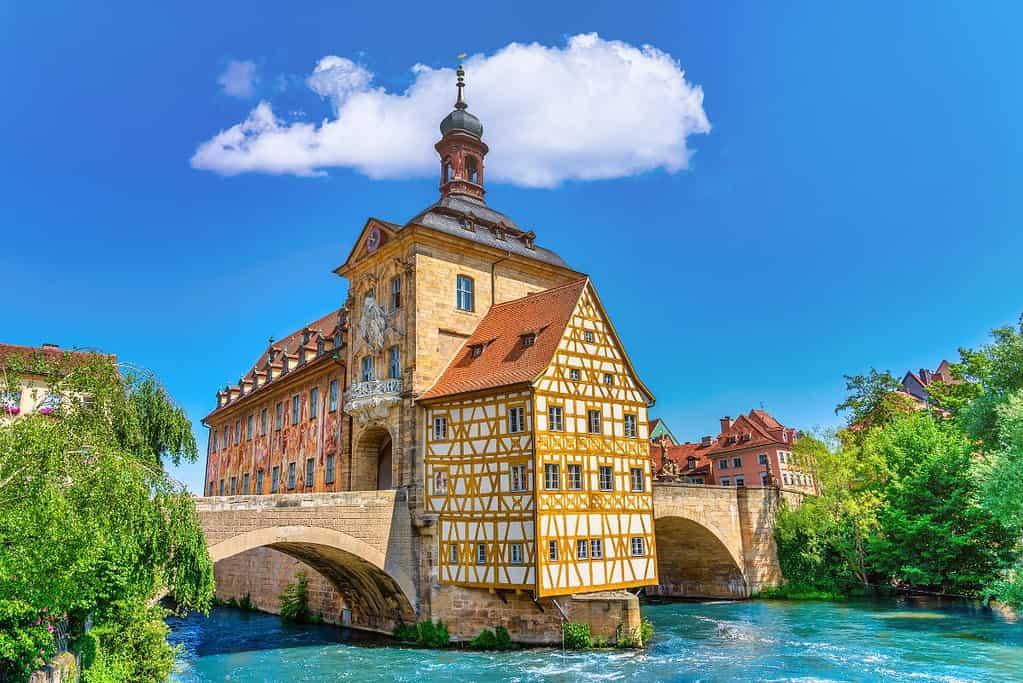
The Town of Bamberg, located in Germany, is a UNESCO World Heritage Site of great historical and cultural significance. Nestled in the heart of Franconia, this picturesque town boasts a rich architectural heritage spanning over a millennium. Its well-preserved medieval and Baroque buildings, enchanting narrow streets, and the unique unity of urban and rural structures make Bamberg a gem. The town’s iconic landmarks, such as the Bamberg Cathedral, the Old Town Hall, and the picturesque Altenburg Castle, showcase its diverse architectural styles and reflect its historical importance as a center of ecclesiastical and secular power. Bamberg’s harmonious blend of natural beauty and cultural heritage captivates visitors with its timeless charm and earns it’s a well-deserved place among UNESCO’s prestigious sites.
Upper Middle Rhine Valley
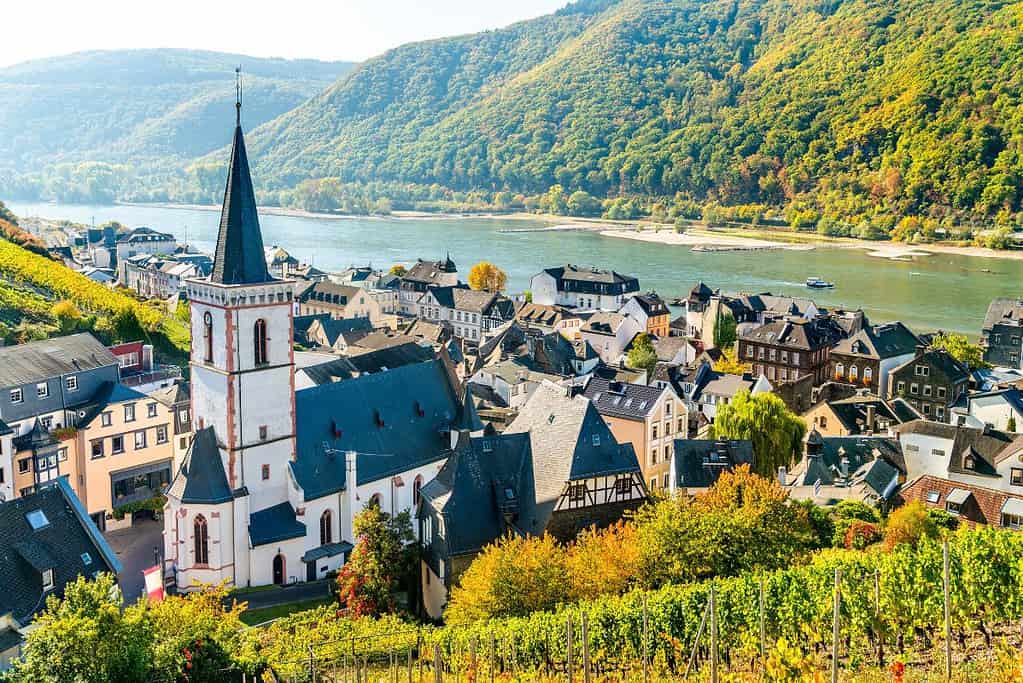
The Upper Middle Rhine Valley is a UNESCO World Heritage Site in Germany. This picturesque region stretches along the Rhine River between Bingen and Koblenz, showcasing breathtaking landscapes and rich cultural heritage. The area is renowned for its dramatic river scenery, with steep vineyards, medieval castles, and charming historic towns dotting the landscape. The Upper Middle Rhine Valley is a testament to the harmonious interaction between human settlements and the natural environment, with its well-preserved castles, fortresses, and historic architecture seamlessly blending into the surrounding beauty. It is a beloved destination for river cruises, offering visitors a glimpse into the region’s fascinating history, folklore, and winemaking traditions.
Völklingen Ironworks
Völklingen Ironworks is a UNESCO World Heritage Site located in Germany. It is a remarkable industrial complex that showcases the history and significance of iron production during the late 19th and early 20th centuries. The site comprises massive ironworks structures, including blast furnaces, steelworks, and rolling mills, which are a testament to the industrial revolution. Visitors can explore the preserved machinery and infrastructure, gaining insight into the evolution of iron and steel production. The Völklingen Ironworks serves as a captivating reminder of the region’s industrial heritage and offers a unique opportunity to witness the ingenuity and engineering prowess of the past.
Wartburg Castle
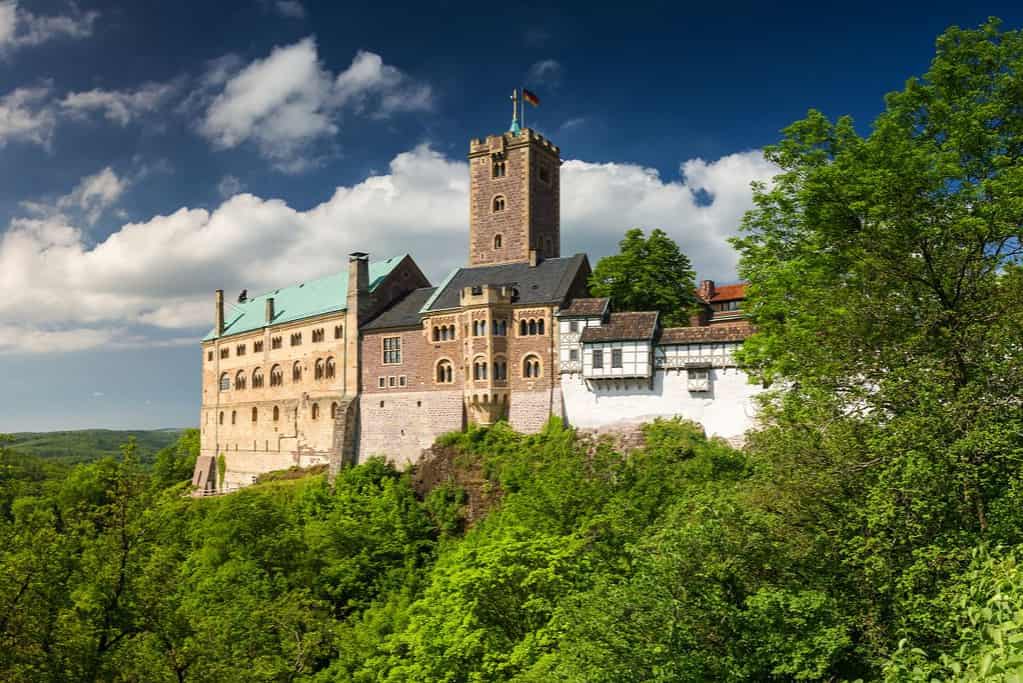
Wartburg Castle is a UNESCO World Heritage Site located in Germany. Perched on a hilltop near Eisenach, this magnificent fortress holds great historical and cultural significance. Here, Martin Luther, the famous German reformer, sought refuge and translated the New Testament into German. The castle’s architecture showcases different styles from different periods, including Romanesque and Gothic elements. With its picturesque setting, rich history, and remarkable preservation, Wartburg Castle symbolizes medieval splendor and an enduring testament to Germany’s cultural heritage.
Water Management System of Augsburg
The Water Management System of Augsburg is a UNESCO World Heritage Site in Augsburg, Germany. It is a remarkable example of a water management system that has been used for centuries. The system consists of a series of canals, water towers, and hydraulic structures developed to provide the city with a reliable water supply and power various industries. One of the most notable features is the Lechkanal, a man-made channel that diverts water from the River Lech to power water wheels and mills. This innovative system, which has been continuously maintained and adapted over the years, is a testament to the engineering and technological prowess of the city. Today, it stands as a testament to Augsburg’s rich history and its successful management of water resources.
Würzburg Residence with the Court Gardens and Residence Square
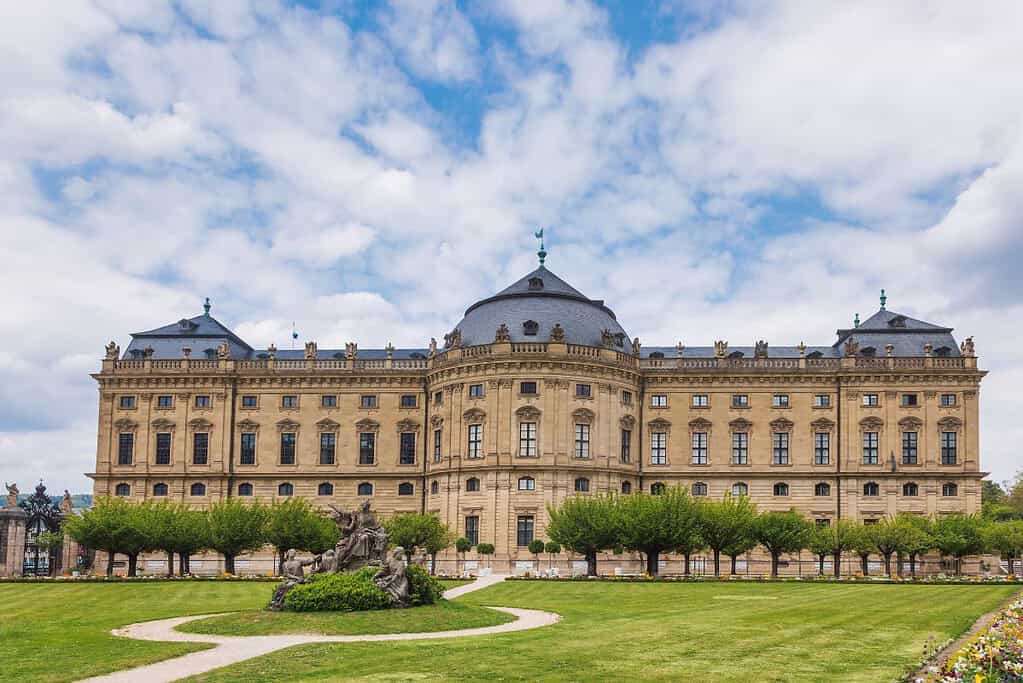
The Würzburg Residence with the Court Gardens and Residence Square is a UNESCO World Heritage Site in Würzburg, Germany. This magnificent palace complex, built in the 18th century, showcases the remarkable Baroque architecture and design of the time. The Residence is renowned for its opulent interiors, including the grand staircase, frescoed ceilings, and lavishly decorated rooms. The Court Gardens surrounding the Residence are beautifully landscaped and offer a tranquil retreat with their intricate geometric patterns and lush greenery. The Residence Square serves as a striking entrance to the palace, featuring the equestrian statue of Prince-Bishop Schönborn and providing a majestic setting for this remarkable UNESCO site.
Zollverein Coal Mine Industrial Complex in Essen
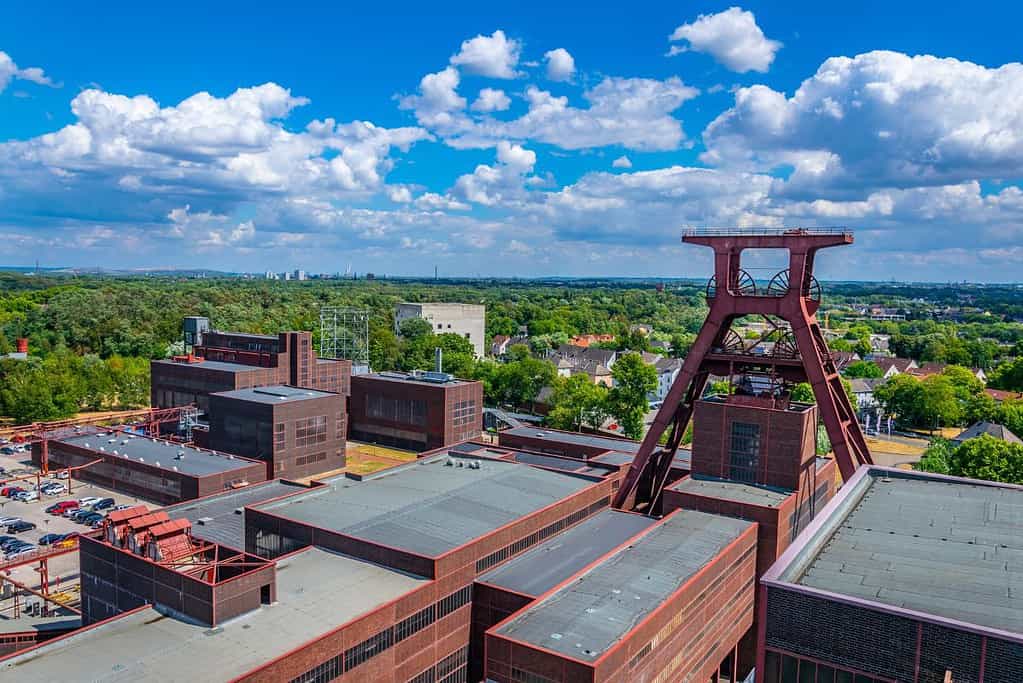
The Zollverein Coal Mine Industrial Complex is a UNESCO World Heritage Site in Essen, Germany. This historic complex was crucial to the region’s industrial development during the 19th and 20th centuries. It served as a significant coal mine and coking plant, symbolizing the growth and transformation of Europe’s coal and steel industries. The site showcases remarkable architectural and technological achievements with its iconic Bauhaus-influenced design and innovative machinery. Today, it stands as a testament to the industrial heritage of the Ruhr region and offers visitors a glimpse into the history of mining and industrialization in Germany.
Ancient and Primeval Beech Forests of the Carpathians and Other Regions of Europe
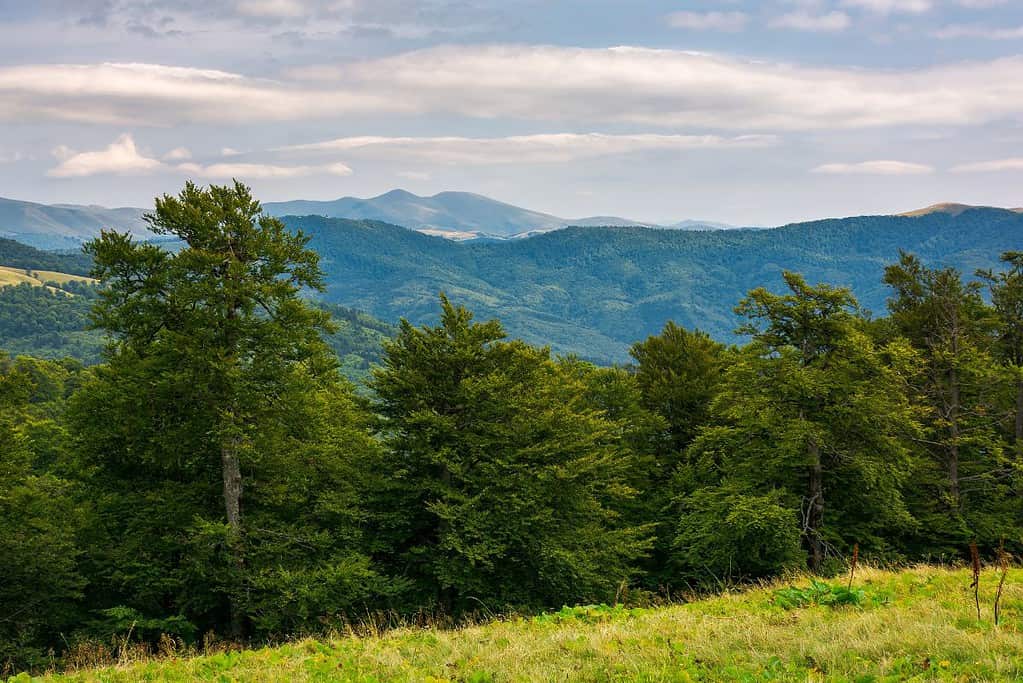
The Ancient and Primeval Beech Forests of the Carpathians and Other Regions of Europe in Germany is a UNESCO World Heritage Site. This site comprises a collection of stunning beech forests that have remained largely untouched by human intervention for centuries. These forests showcase the remarkable biodiversity and natural beauty of the Carpathian Mountains and other regions of Europe. The site is home to ancient trees, diverse plant species, and numerous rare and endangered animal species. It serves as a vital sanctuary for wildlife and an exceptional example of the interconnectedness between forests and their ecosystems.
Messel Pit Fossil Site
The Messel Pit Fossil Site is a renowned UNESCO World Heritage Site in Germany. It is an ancient excavation that offers remarkable insights into the Eocene Epoch, approximately 47 million years ago. The site is celebrated for its exceptional preservation of fossils, including the remains of numerous extinct species and exceptionally well-preserved imprints of plants, insects, and mammals. The Messel Pit Fossil Site provides invaluable evidence for scientists studying the evolution and ecology of prehistoric life, making it a significant destination for paleontologists and visitors alike.
Wadden Sea
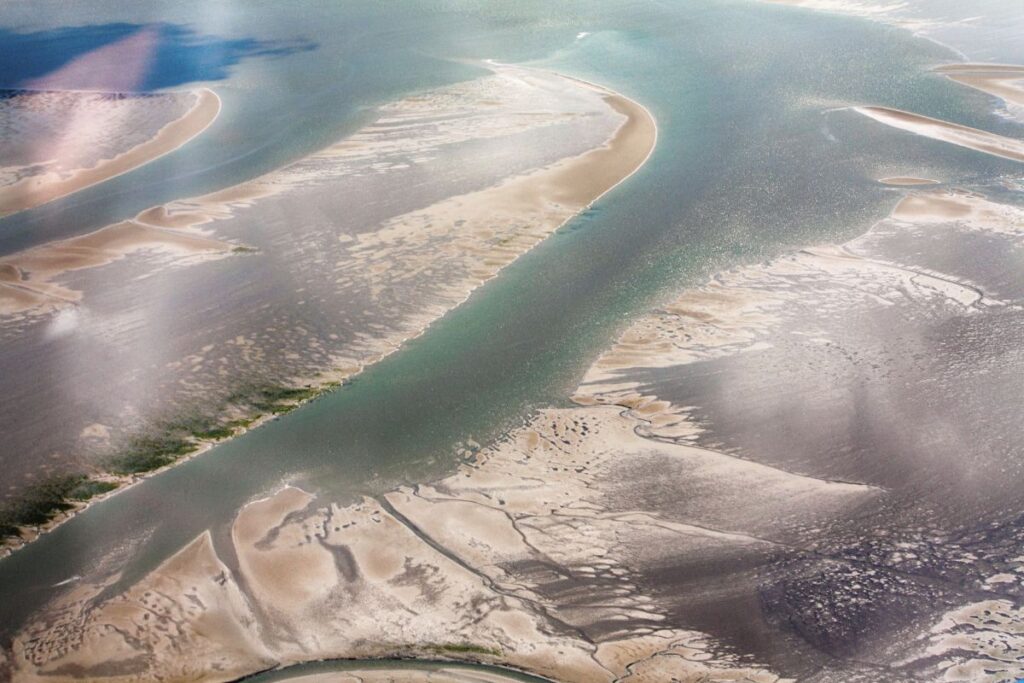
The Wadden Sea is a UNESCO World Heritage Site in the Netherlands, Germany, and Denmark. Its unique and dynamic coastal ecosystem spans over 10,000 square kilometers. The Wadden Sea is renowned for its rich biodiversity and is a vital habitat for numerous species, including migratory birds, seals, and fish. The site features vast tidal flats, salt marshes, and dunes, which are constantly shaped and transformed by the ebb and flow of the tides. Visitors to the Wadden Sea can witness spectacular natural phenomena, such as the dramatic tidal movements and the incredible bird migrations here. It is a place of outstanding natural beauty and ecological significance, making it a must-visit destination for nature enthusiasts and conservationists.
Germany UNESCO tentative list
- Francke Foundation Buildings
- The Jewish Cemetery of Altona Königstraße. Sephardic Sepulchral Culture of the 17th and 18th centuries between Europe and the Caribbean
- Alpine and pre-alpine meadow and marsh landscapes (historic anthropogenic landscapes in the area of “Werdenfelser Land”, “Ammergau”, “Staffelseegebiet” and “Murnauer Moos,” district Garmisch-Partenkirchen)
- Residence Ensemble Schwerin – Cultural Landscape of Romantic Historicism
- Old Synagogue and Mikveh in Erfurt – Testimonies of everyday life, religion, and town history between change and continuity
- Dreams in Stone – the palaces of King Ludwig II of Bavaria: Neuschwanstein, Linderhof, and Herrenchiemsee
- Luther’s memorials in Saxony-Anhalt, Saxony, Bavaria, and Thuringia
- Moravian Church Settlements
Tours in Germany
Our choices of tours in Germany are divided into thematic features such as Berlin, Munich, and Hamburg Experience.
